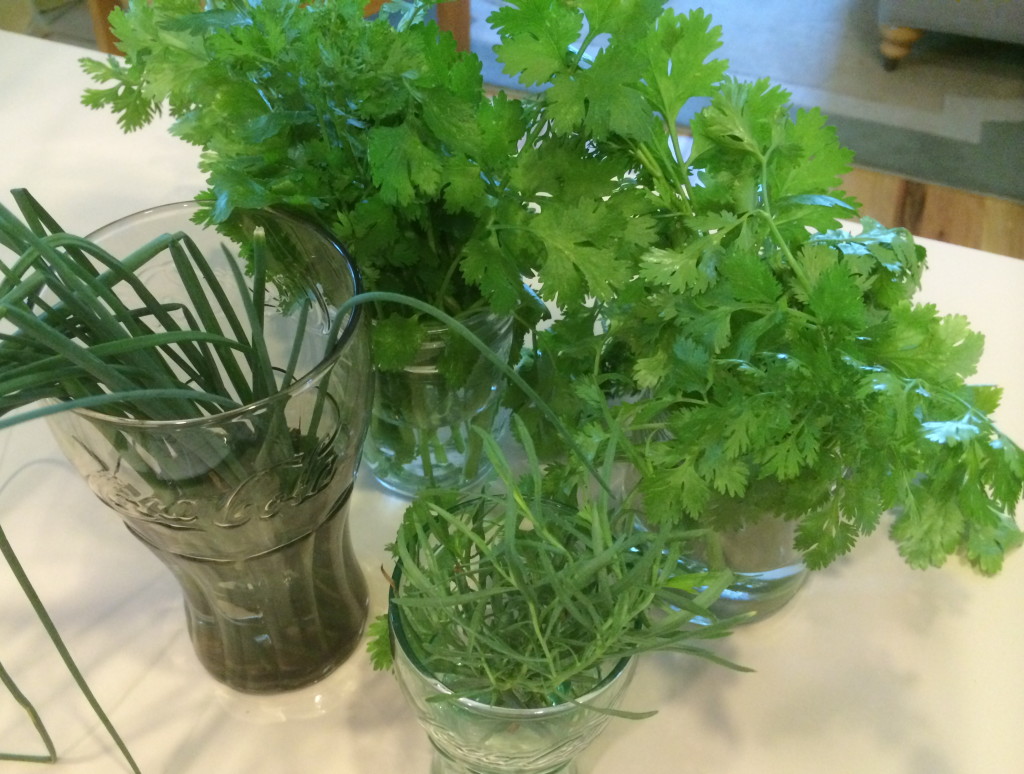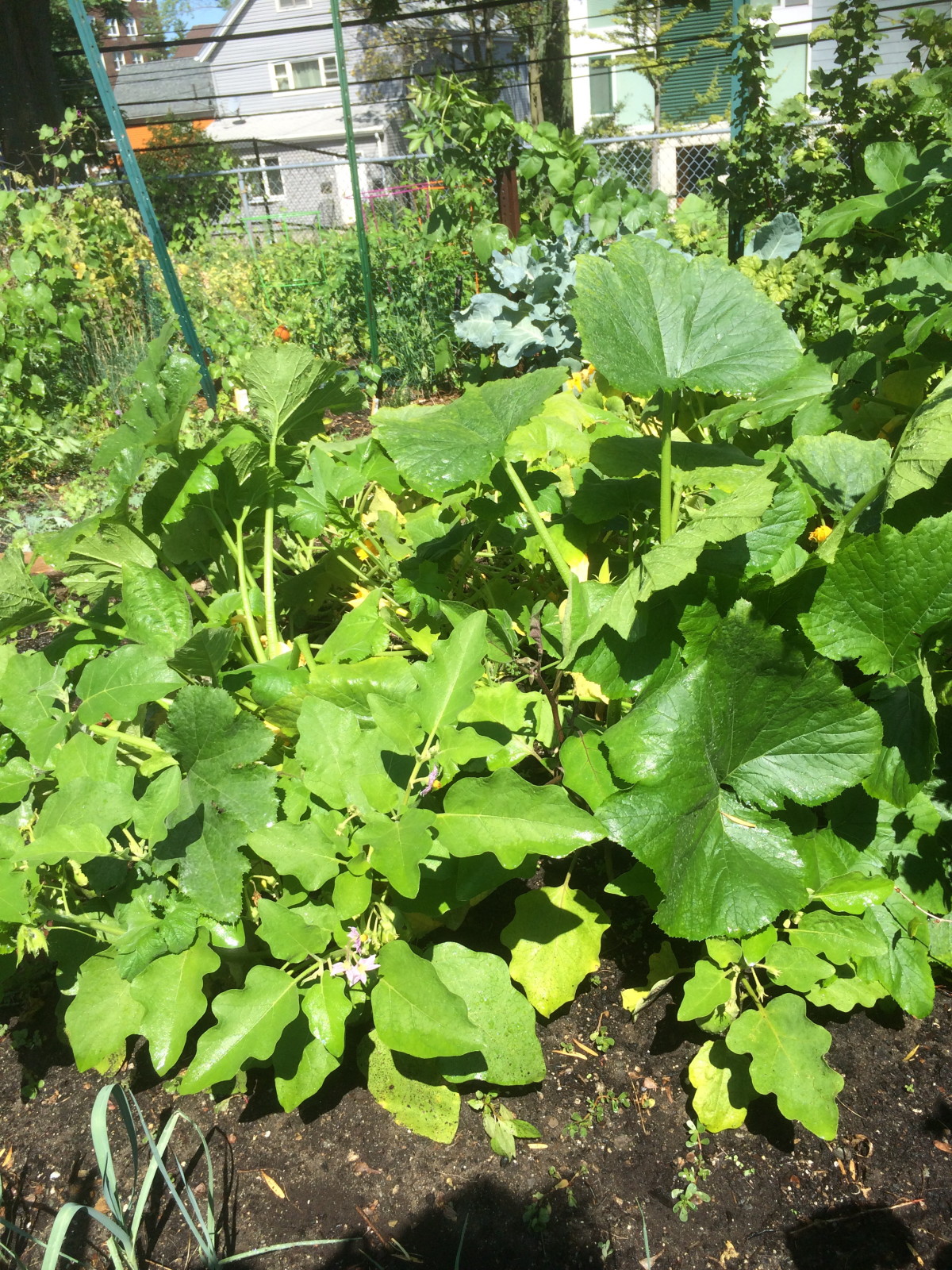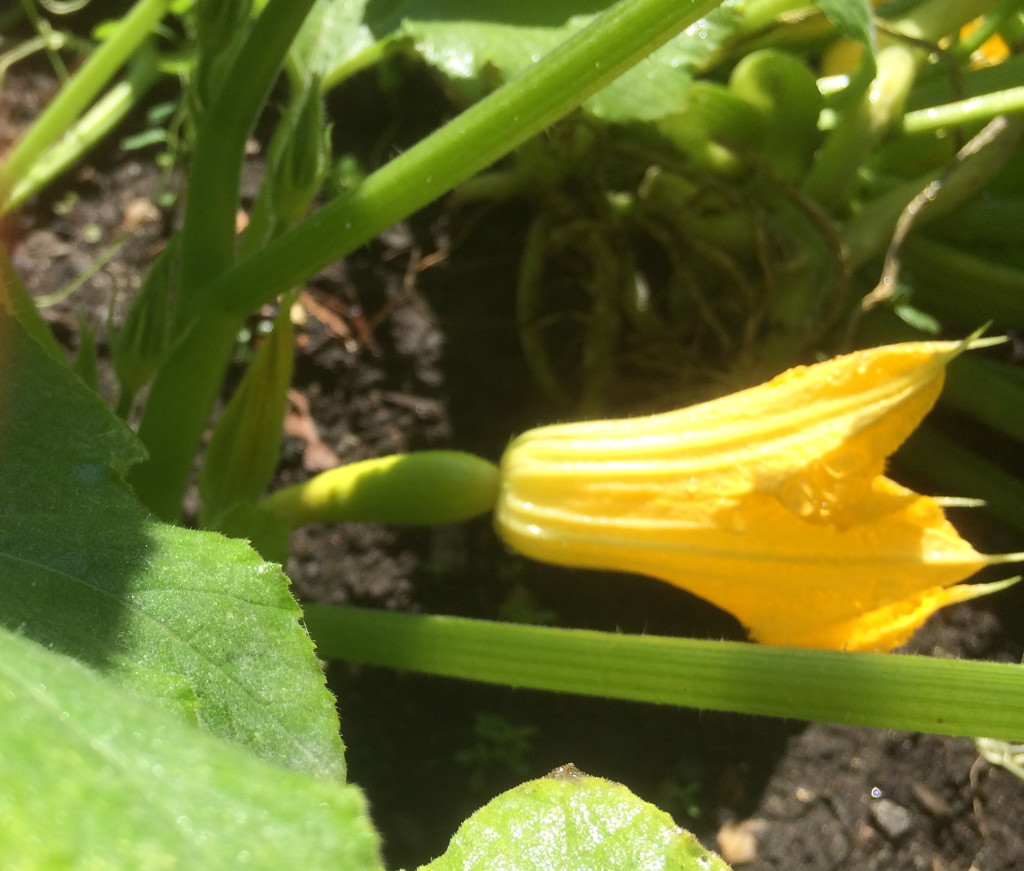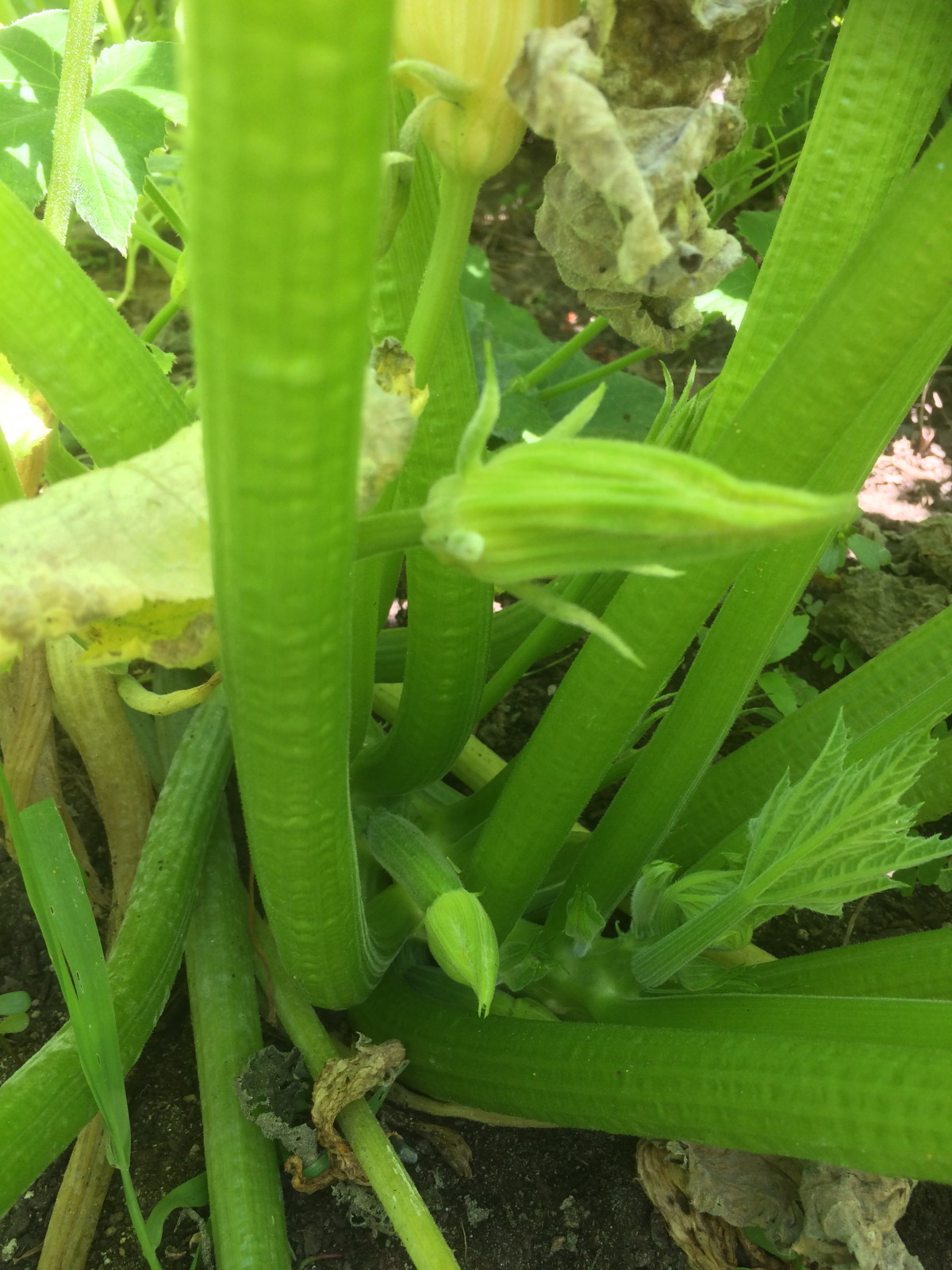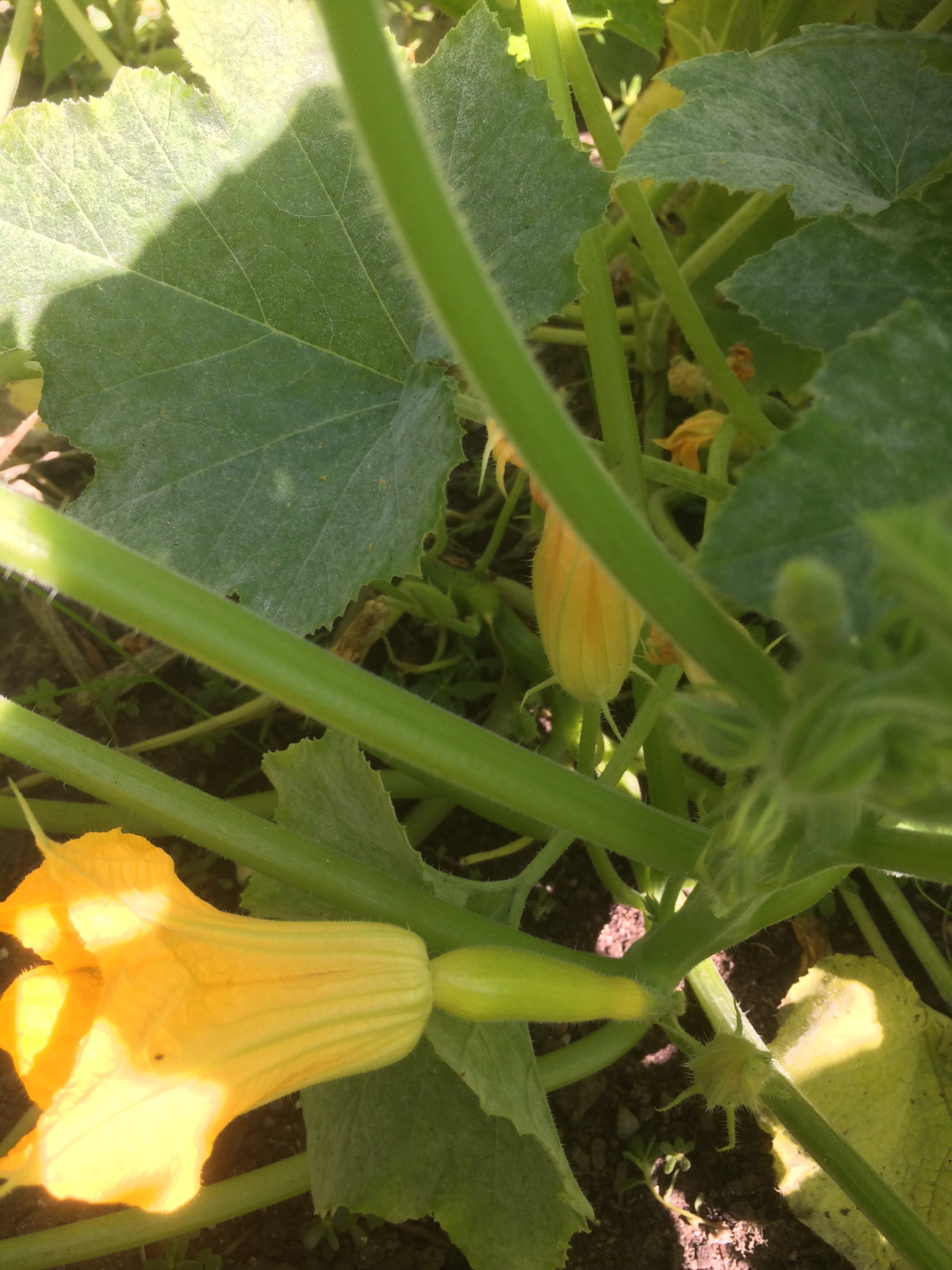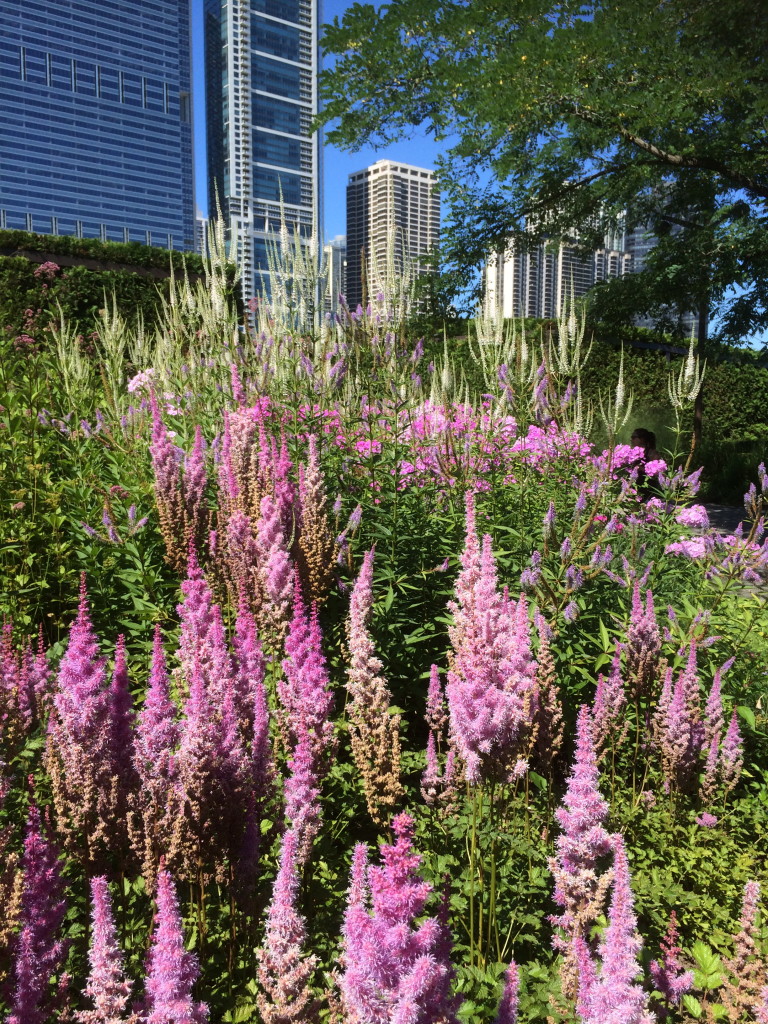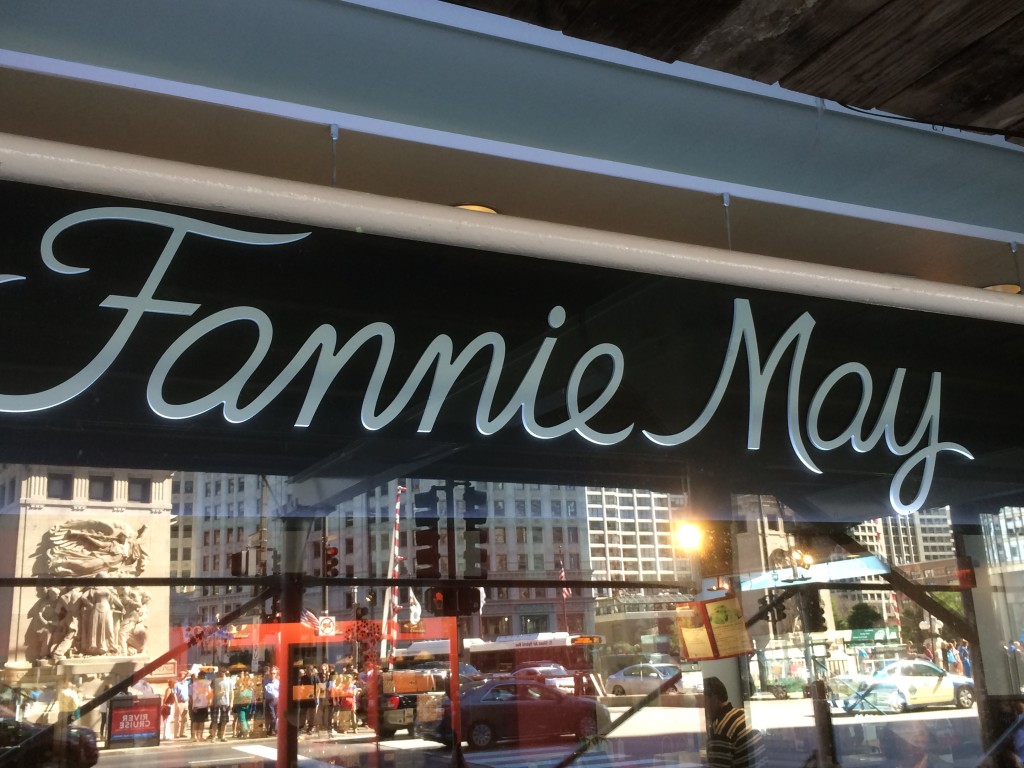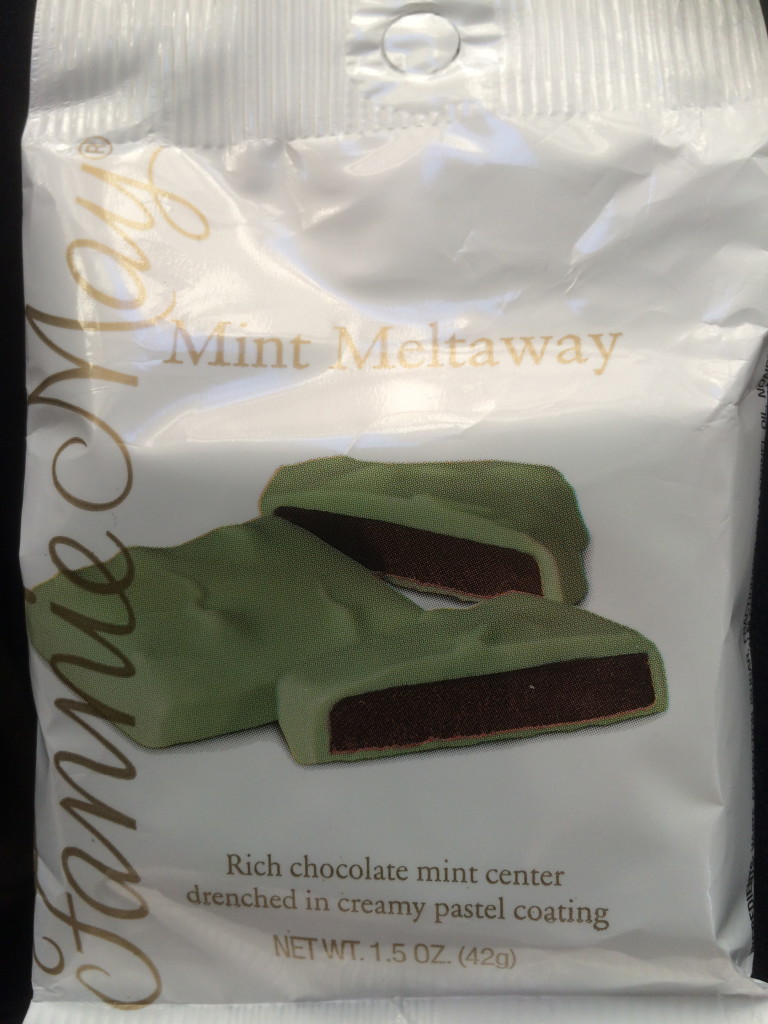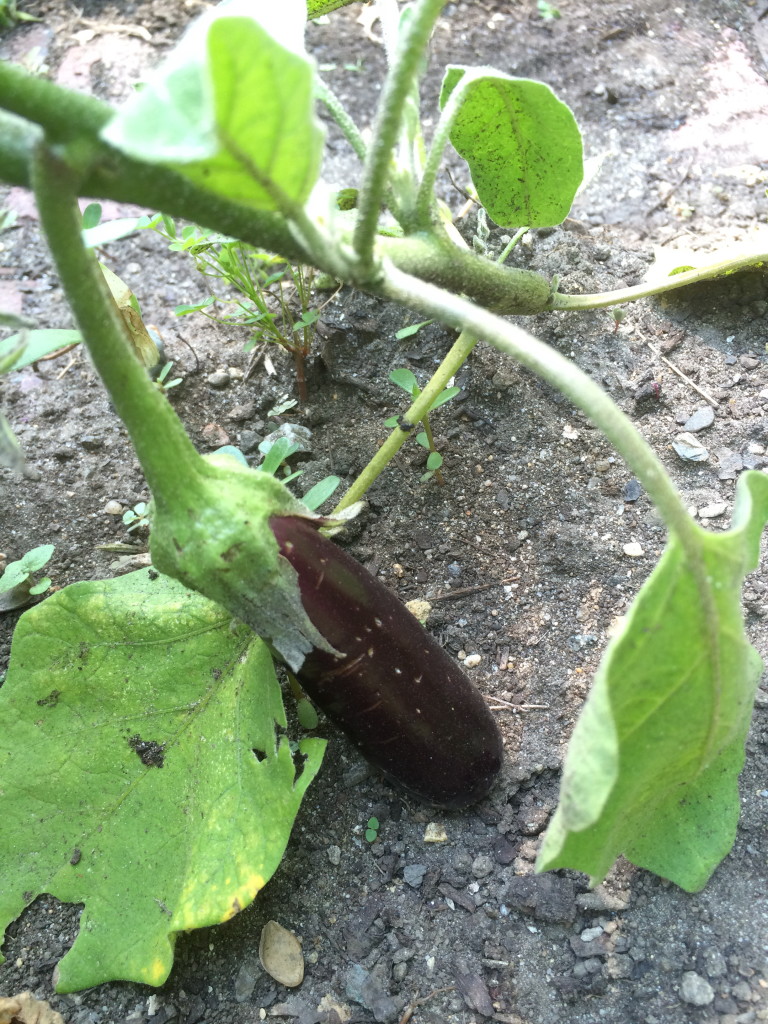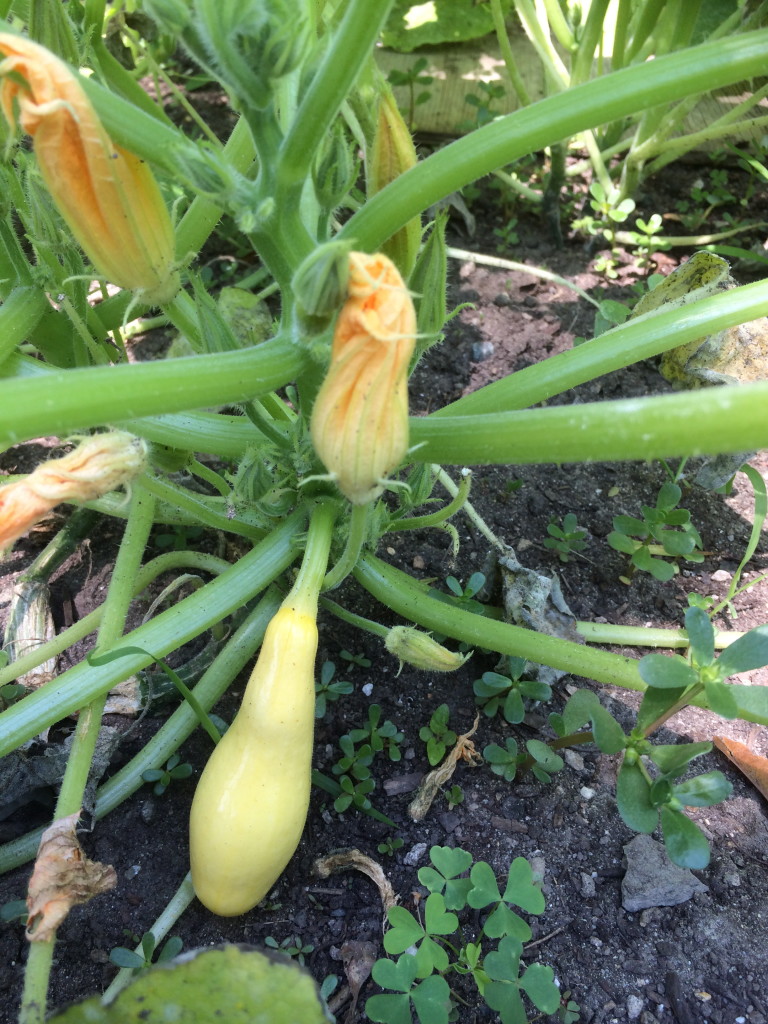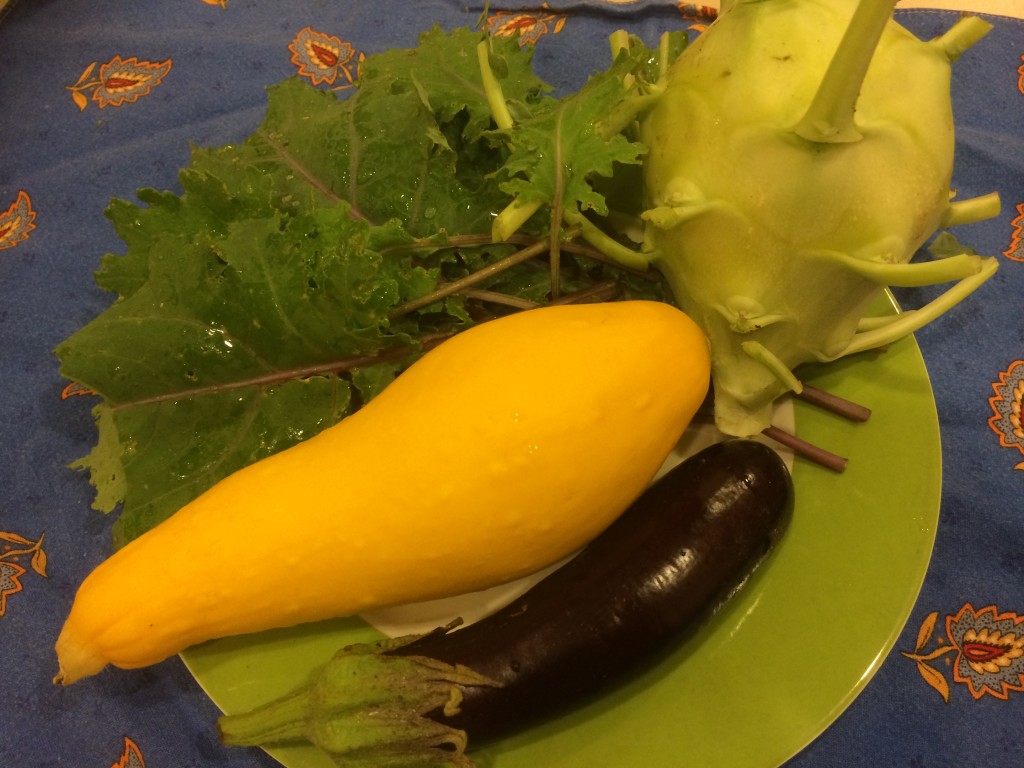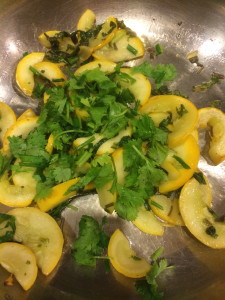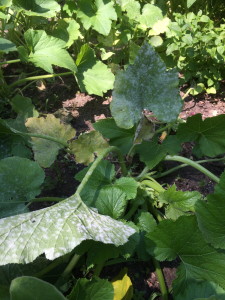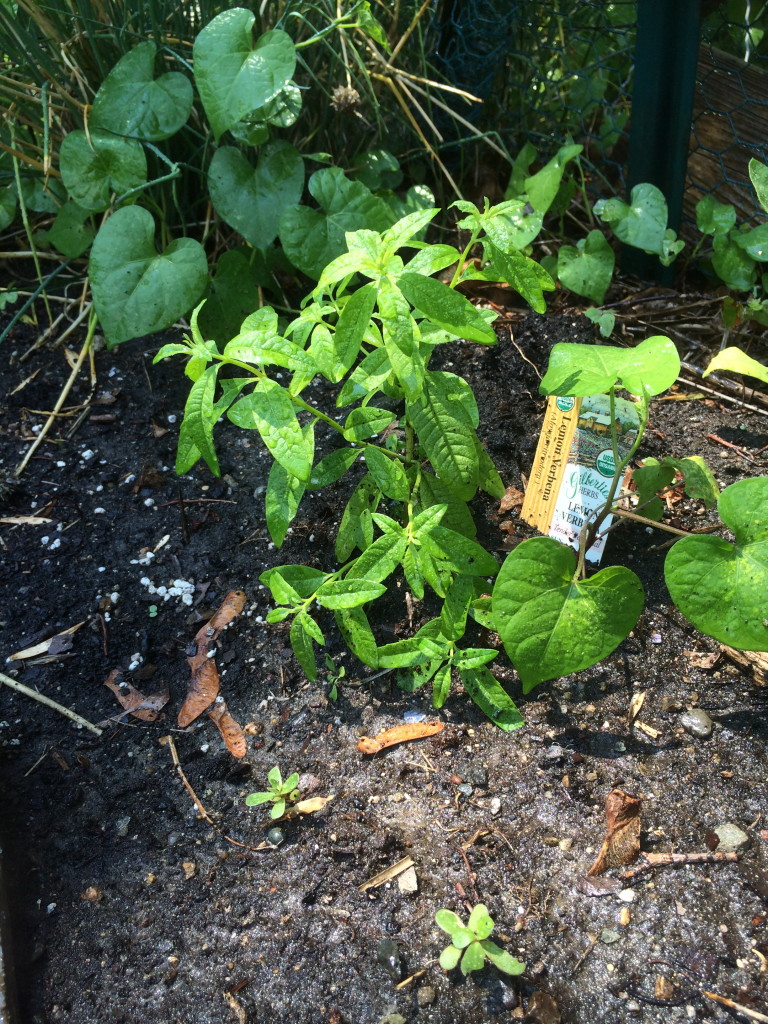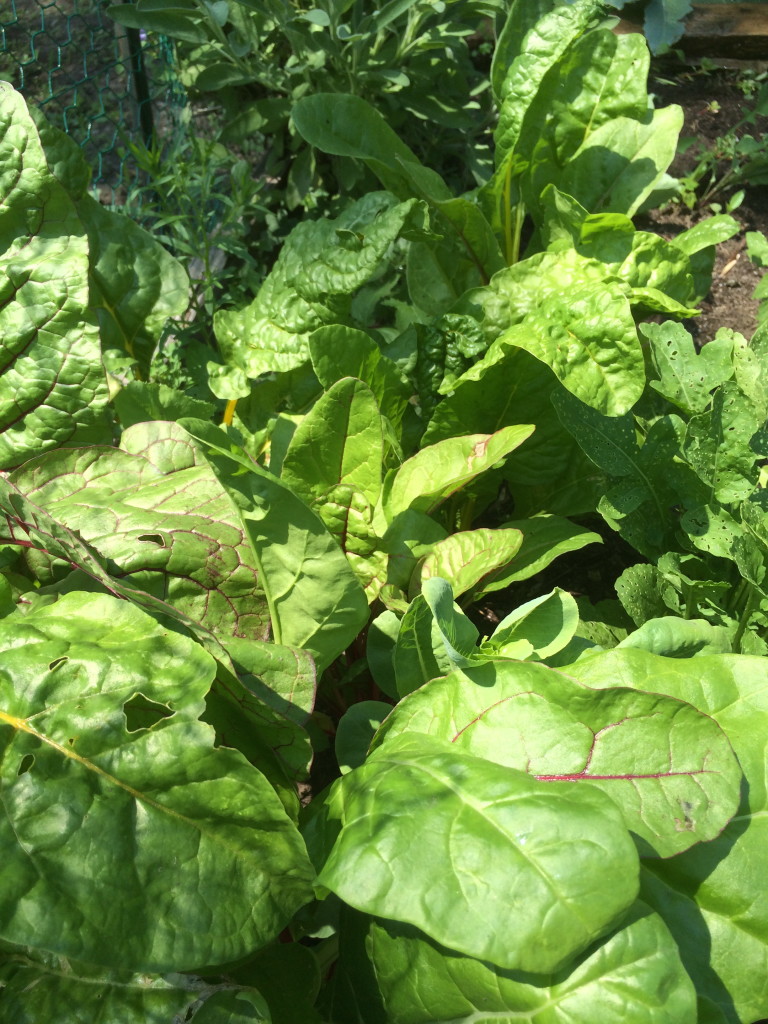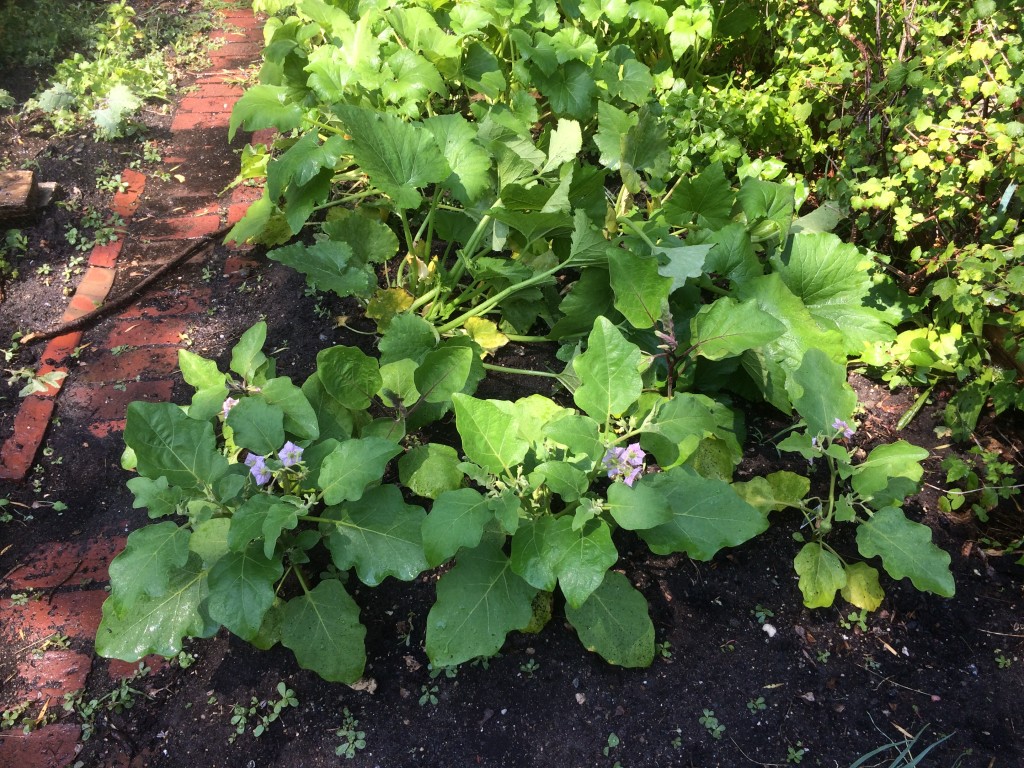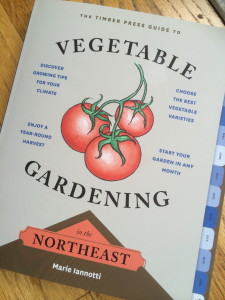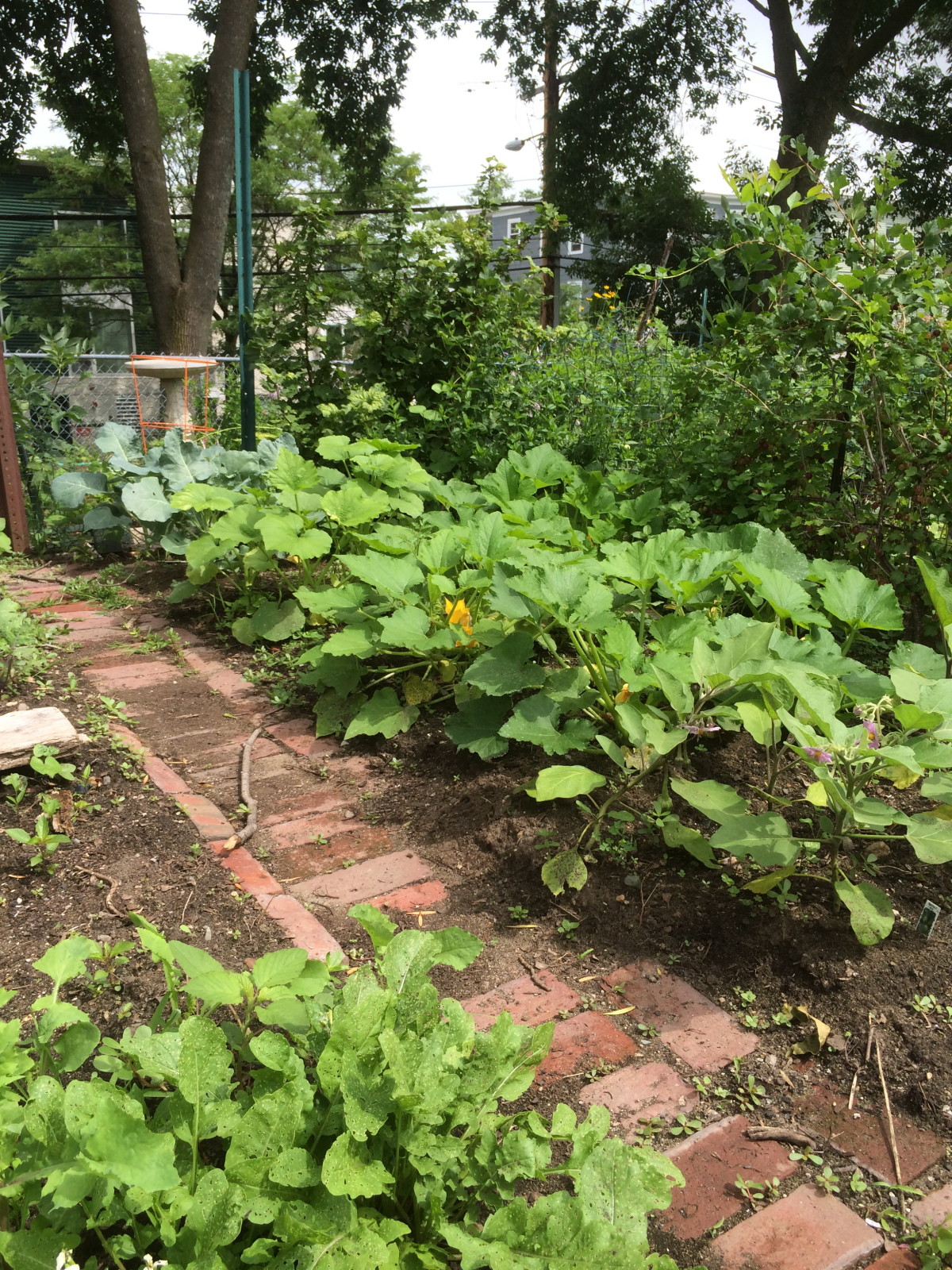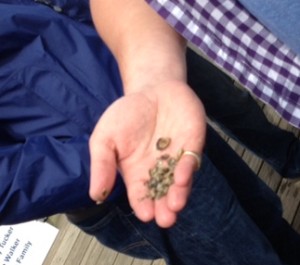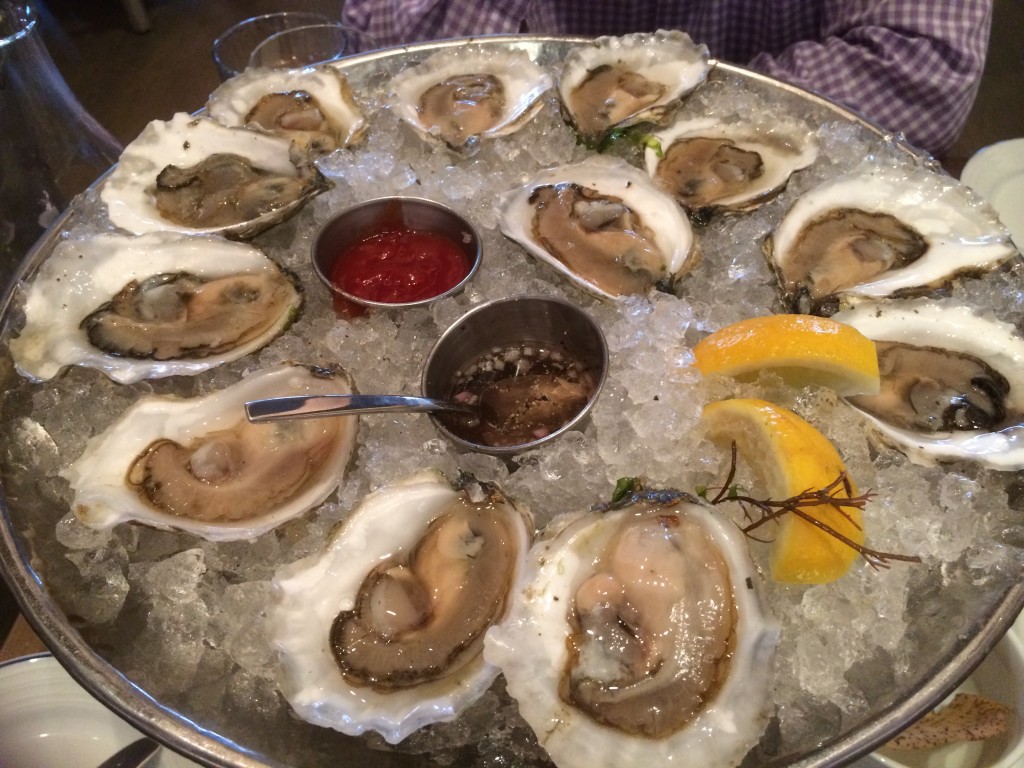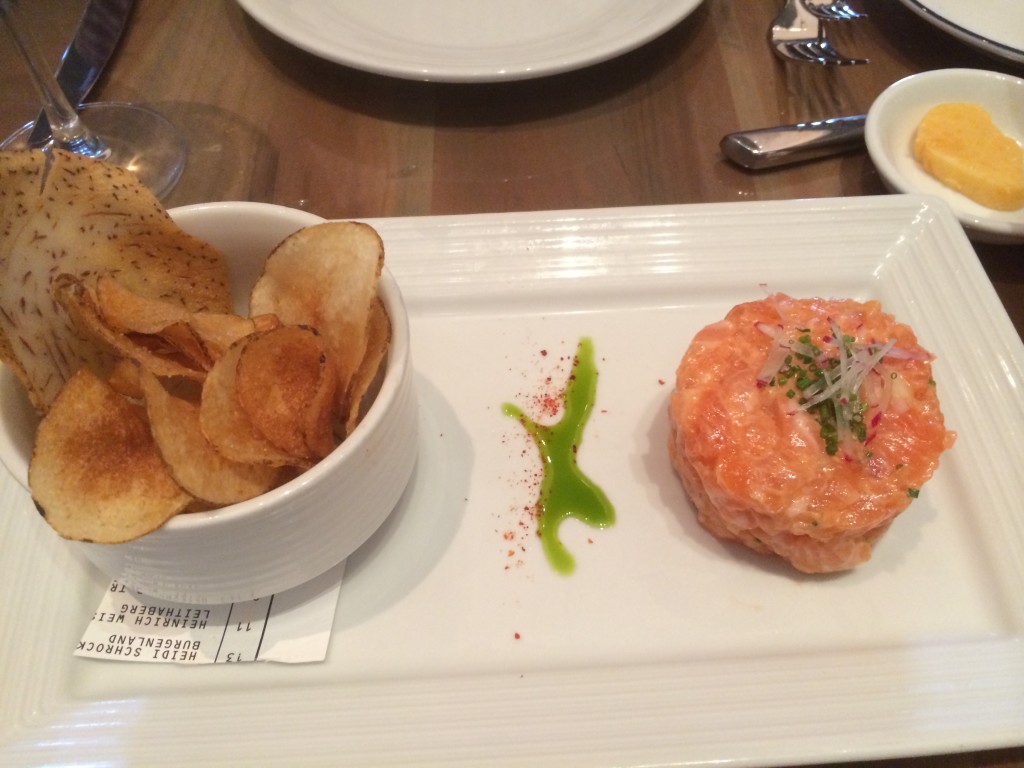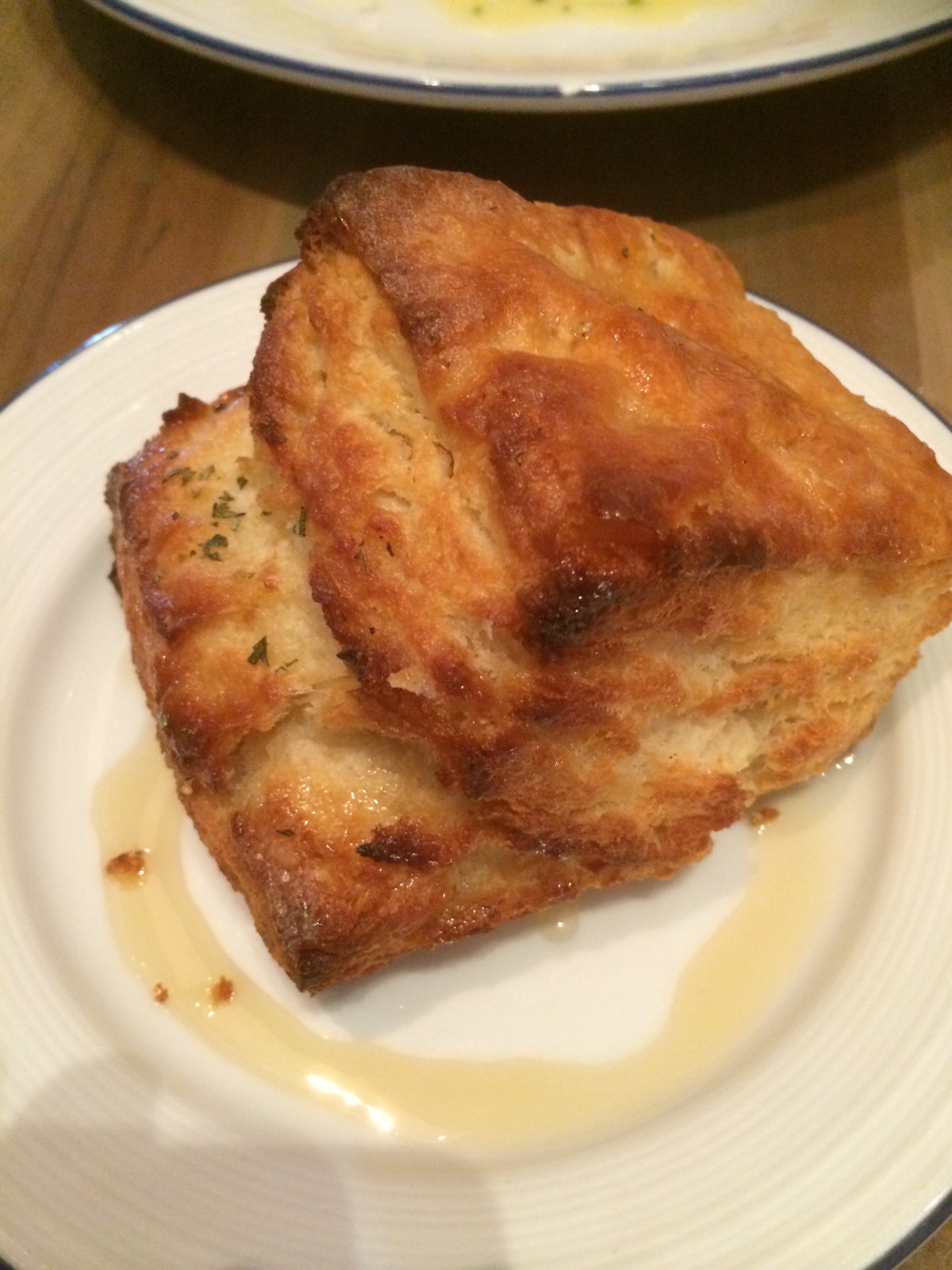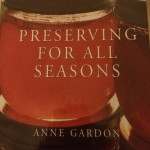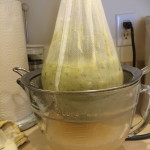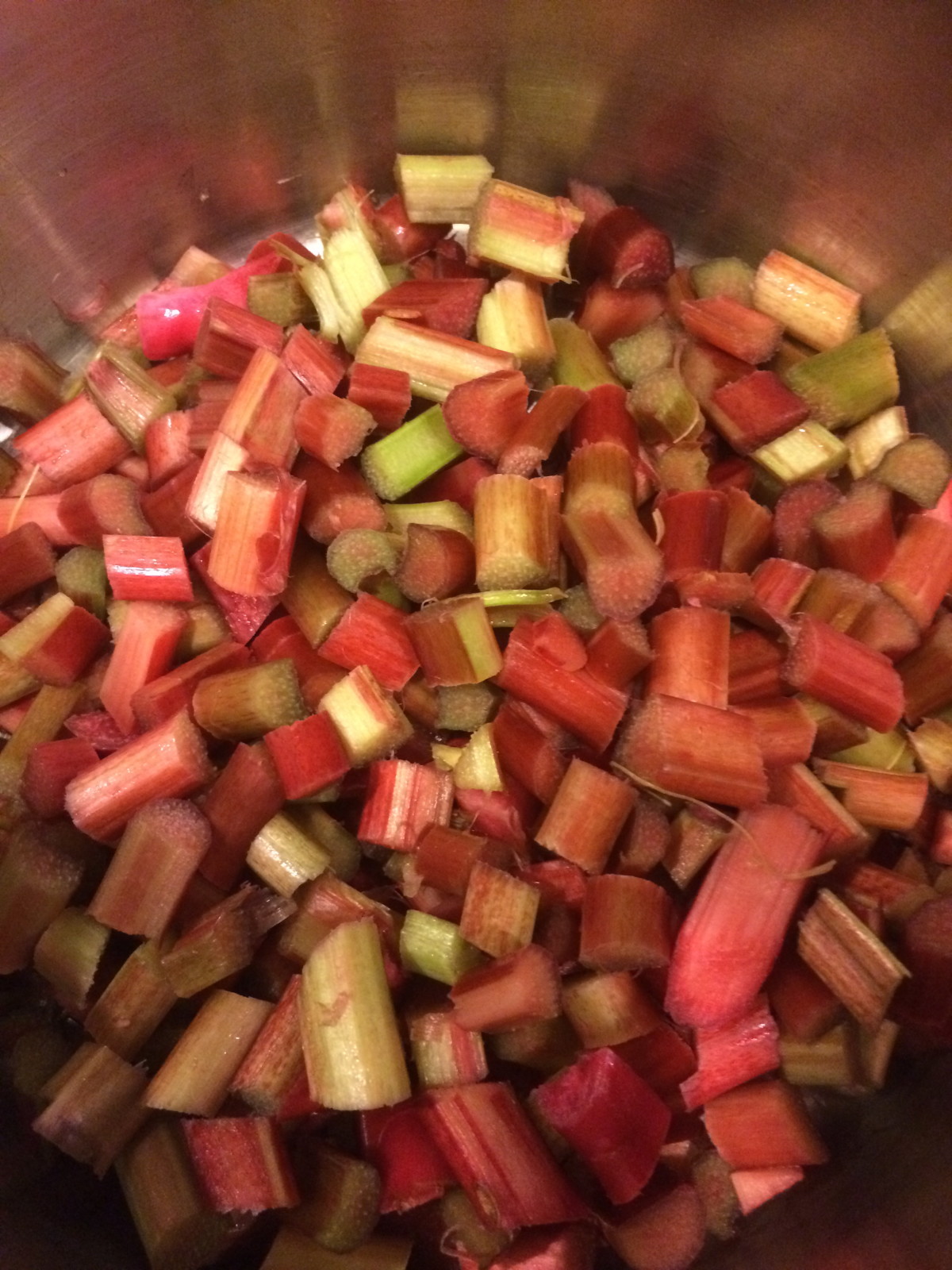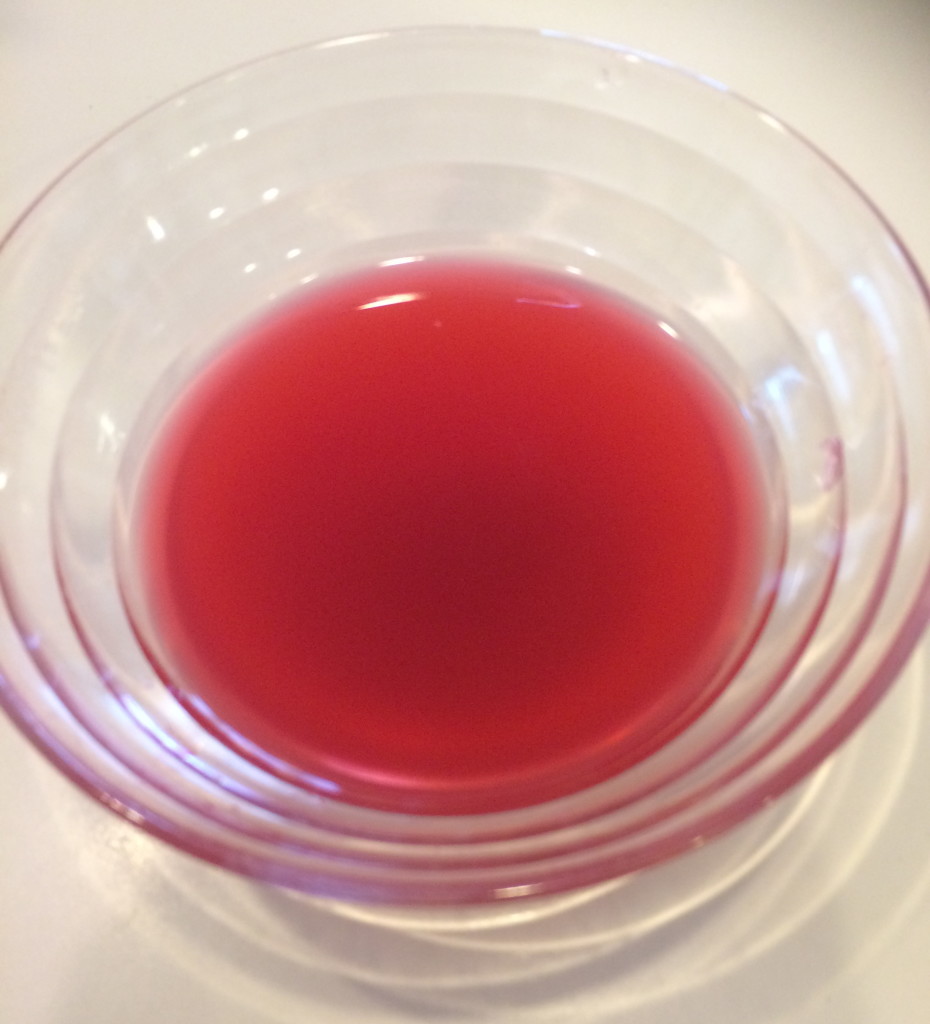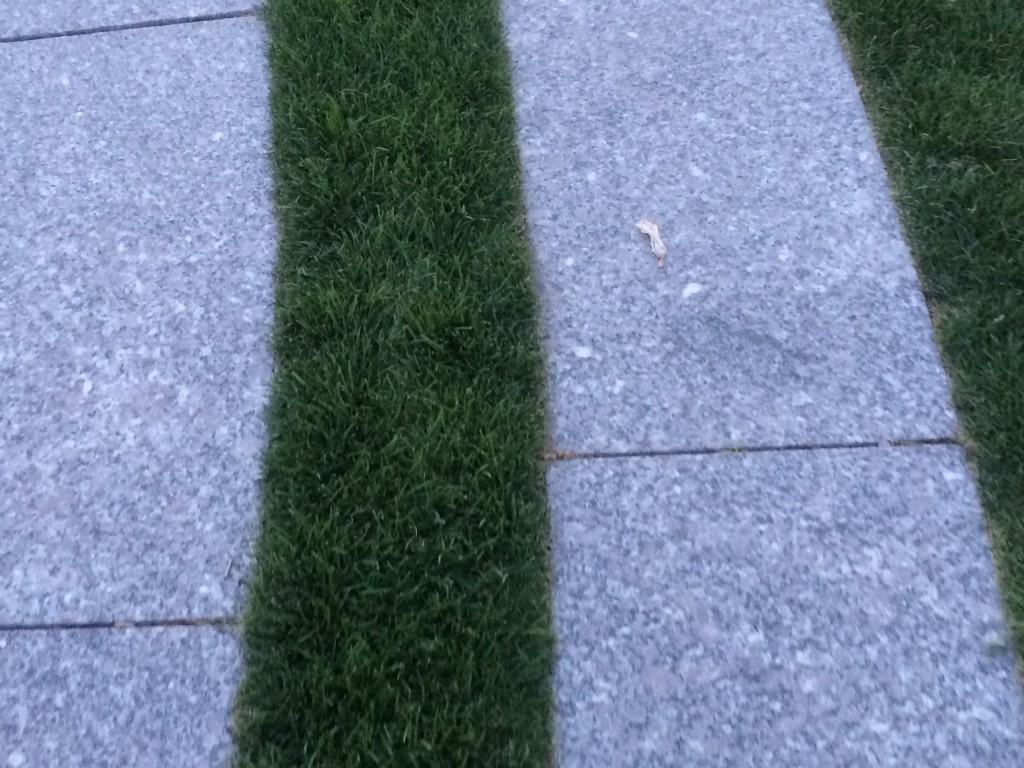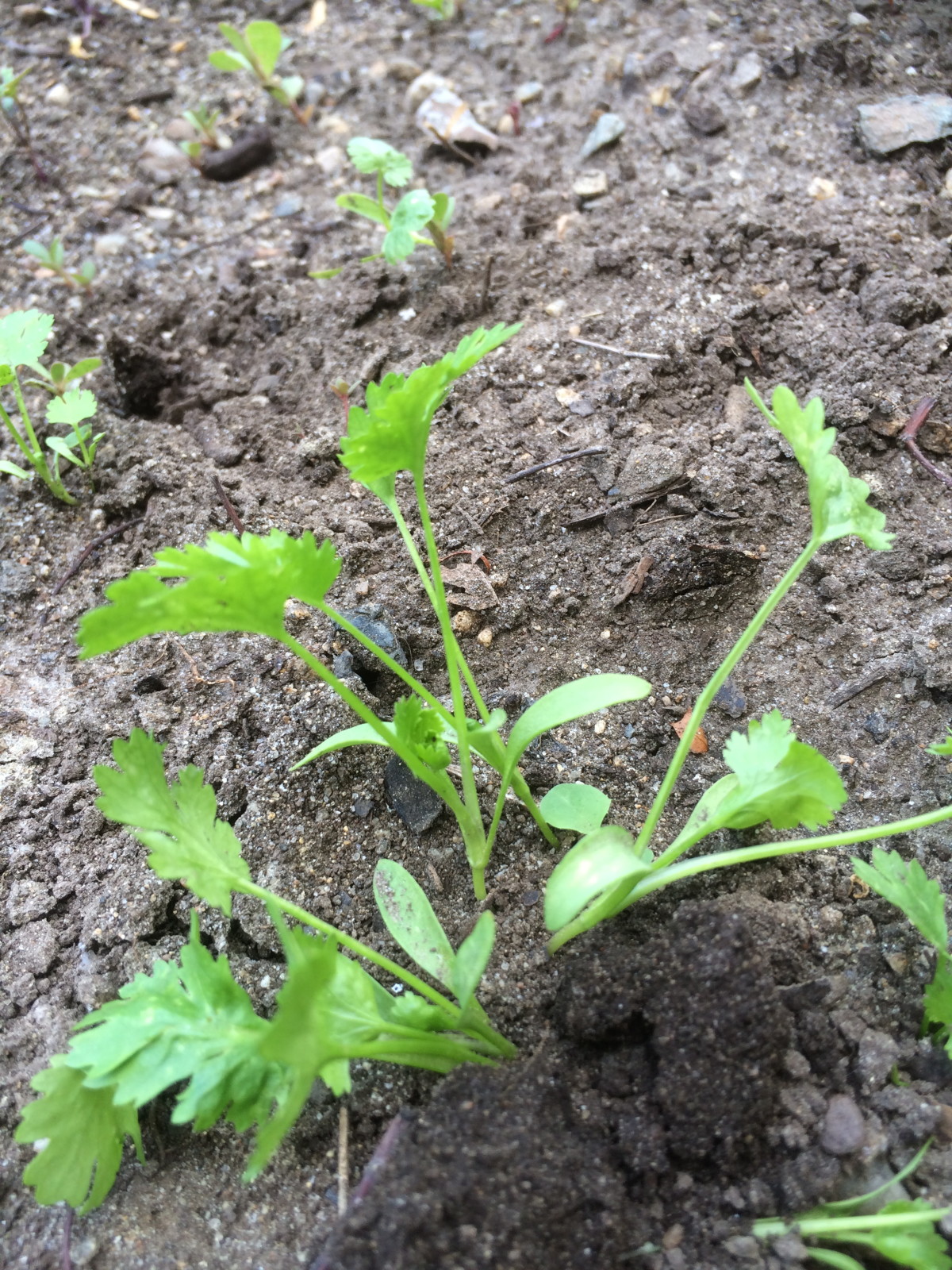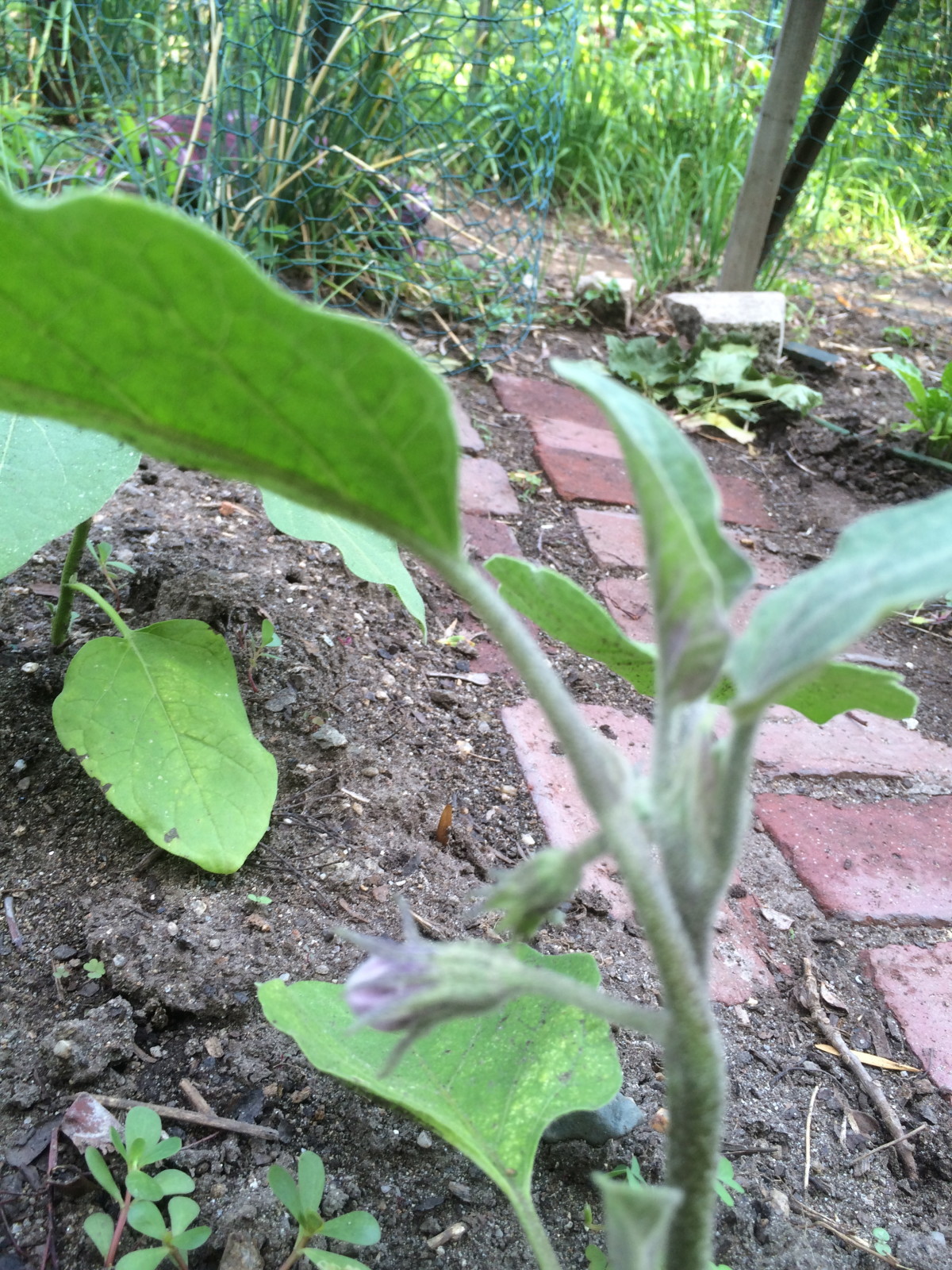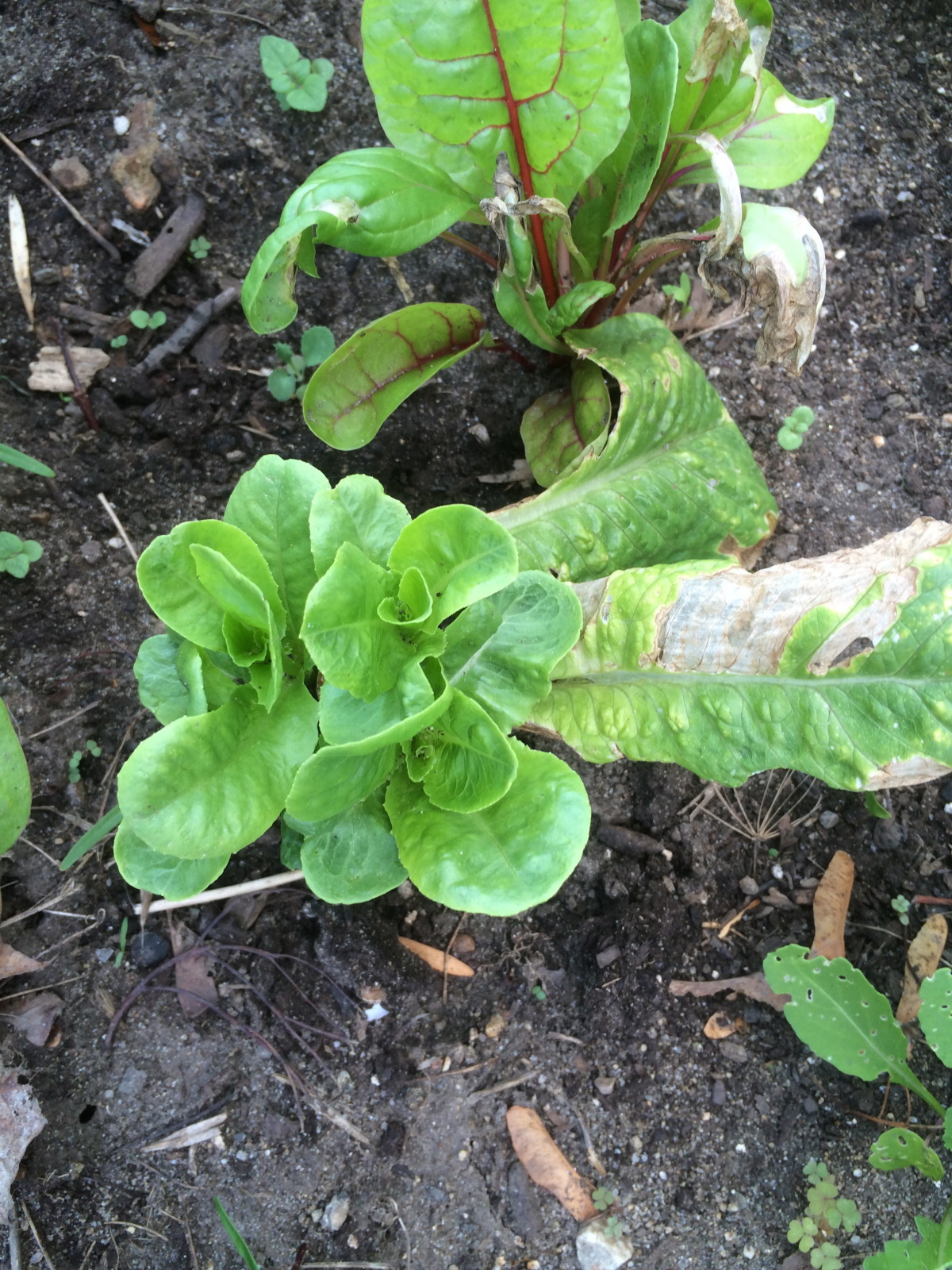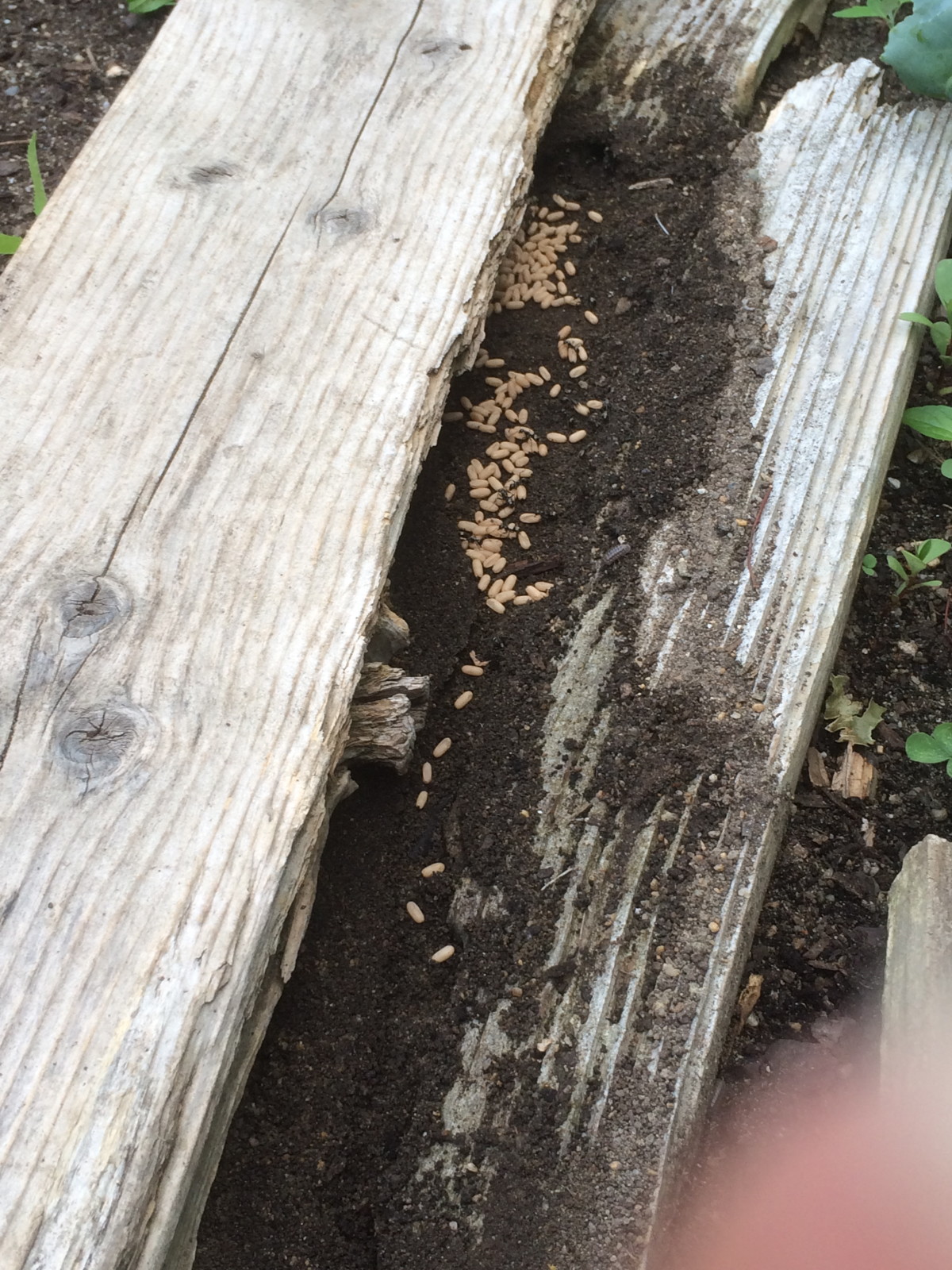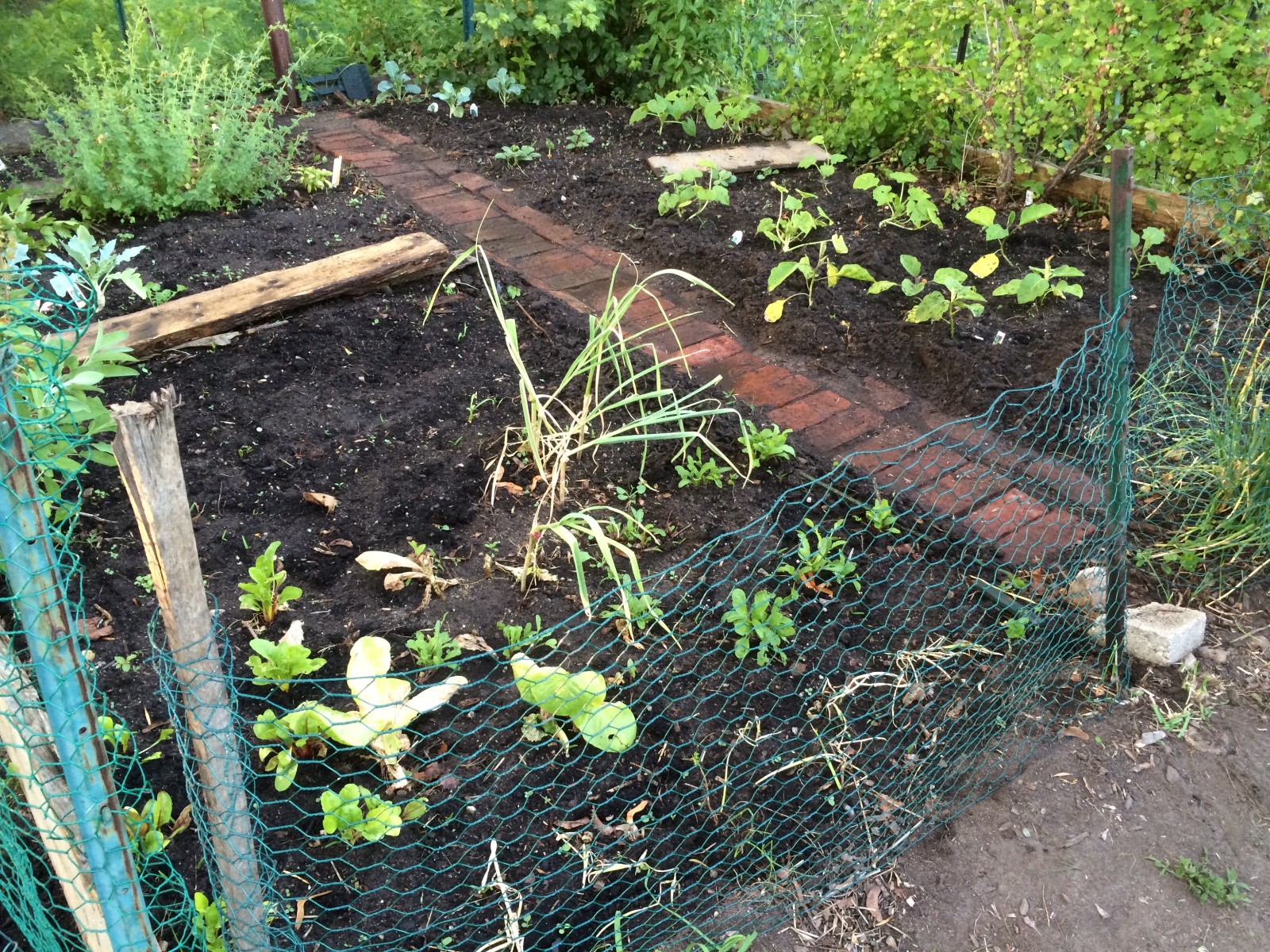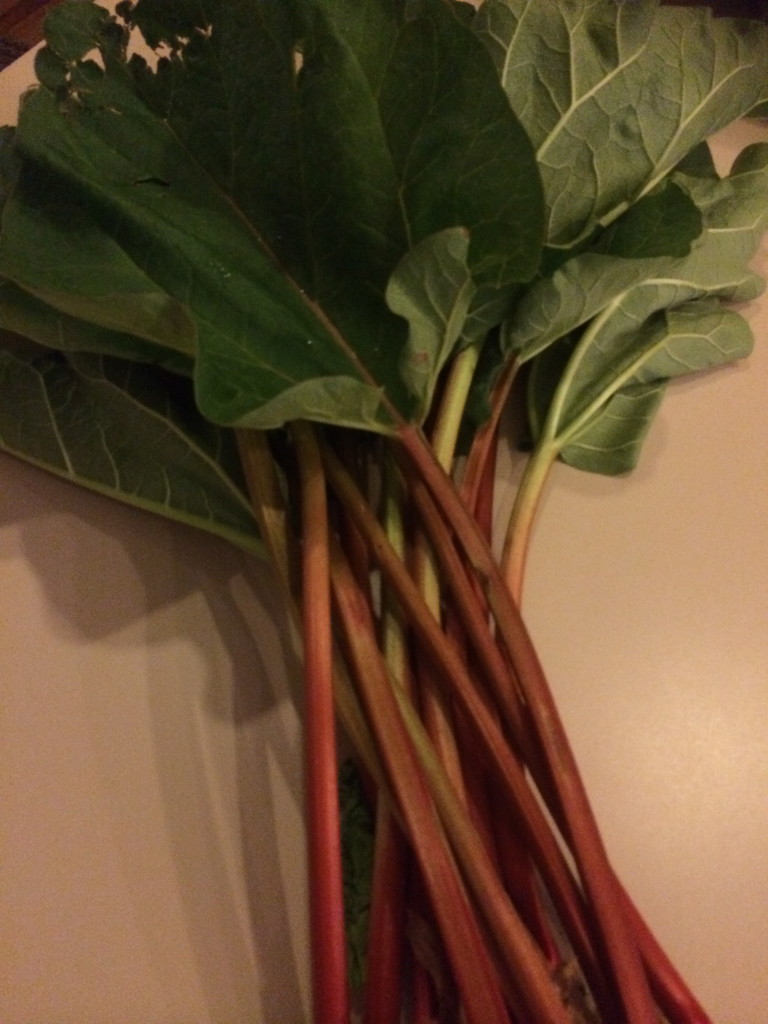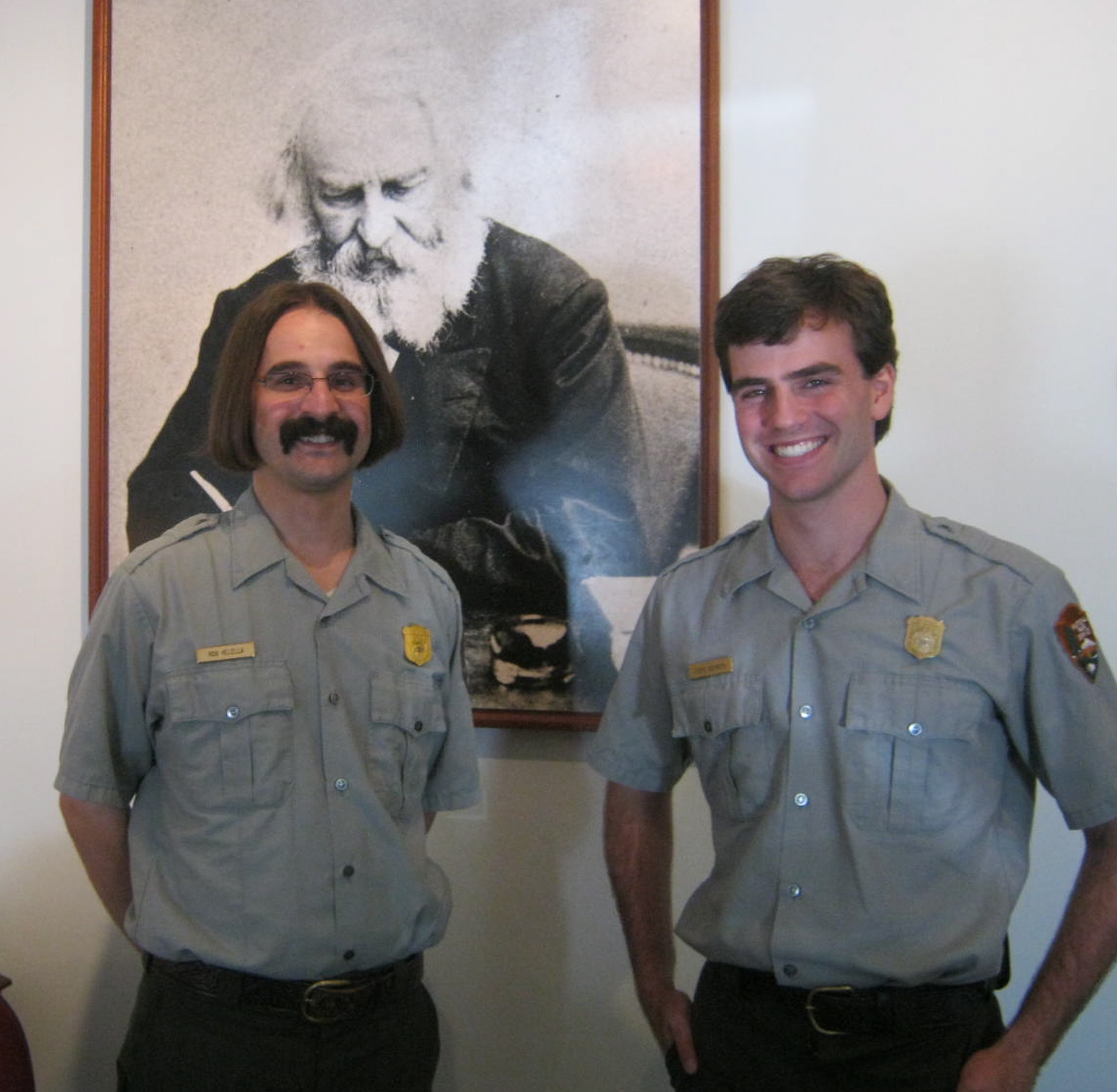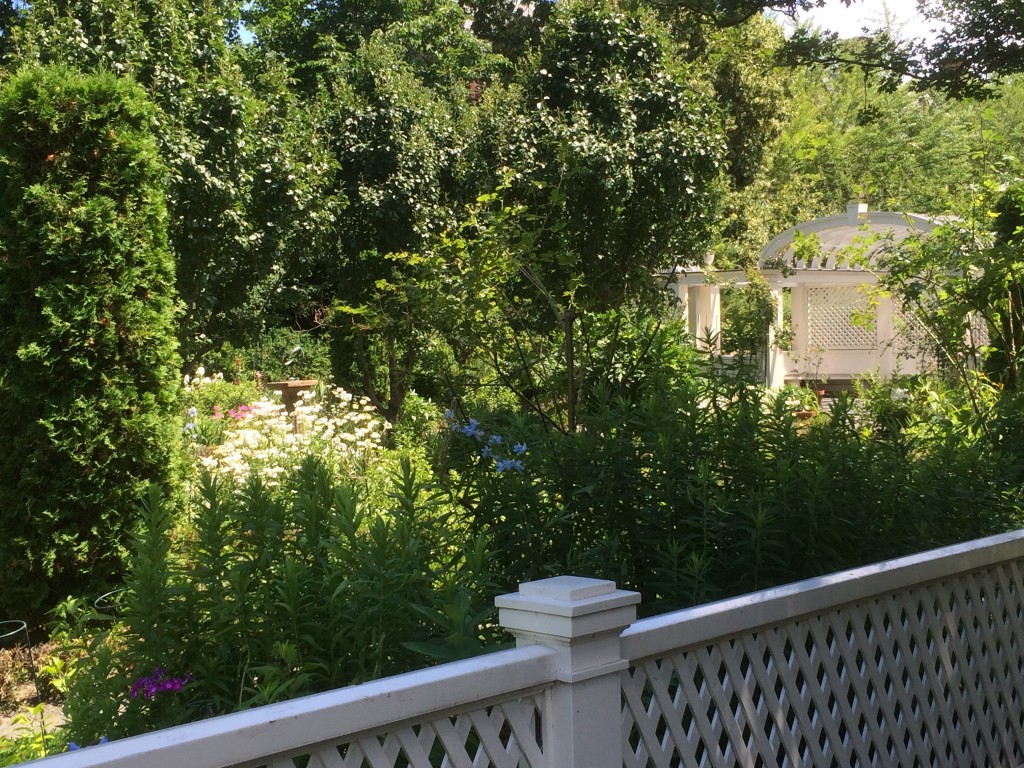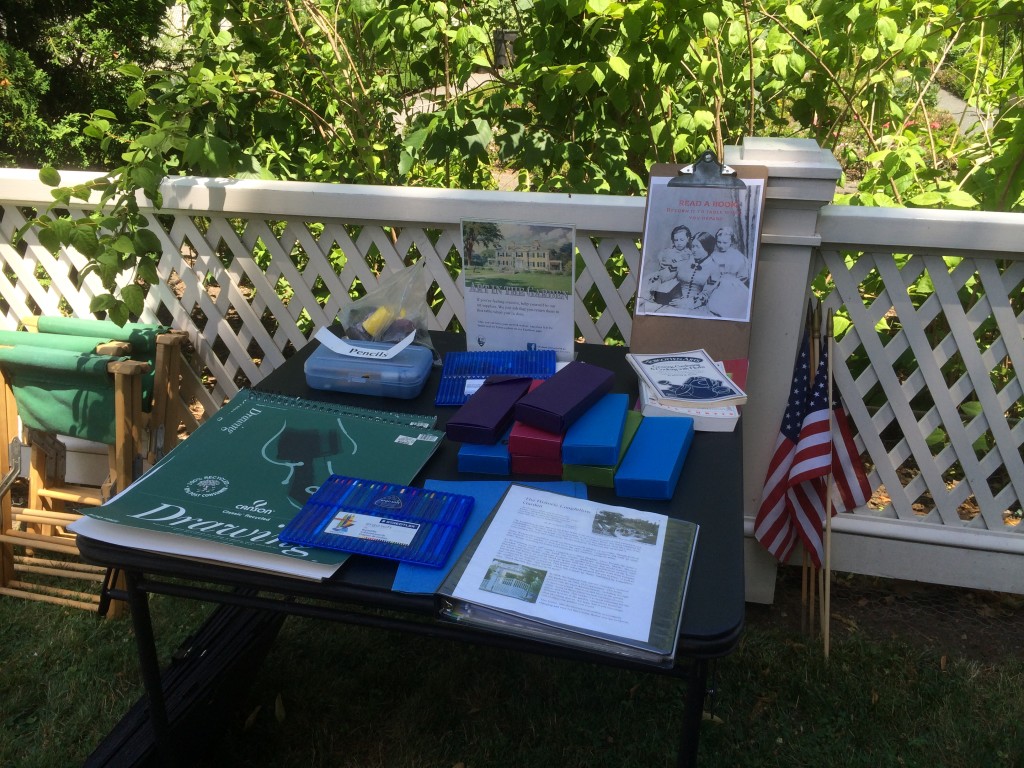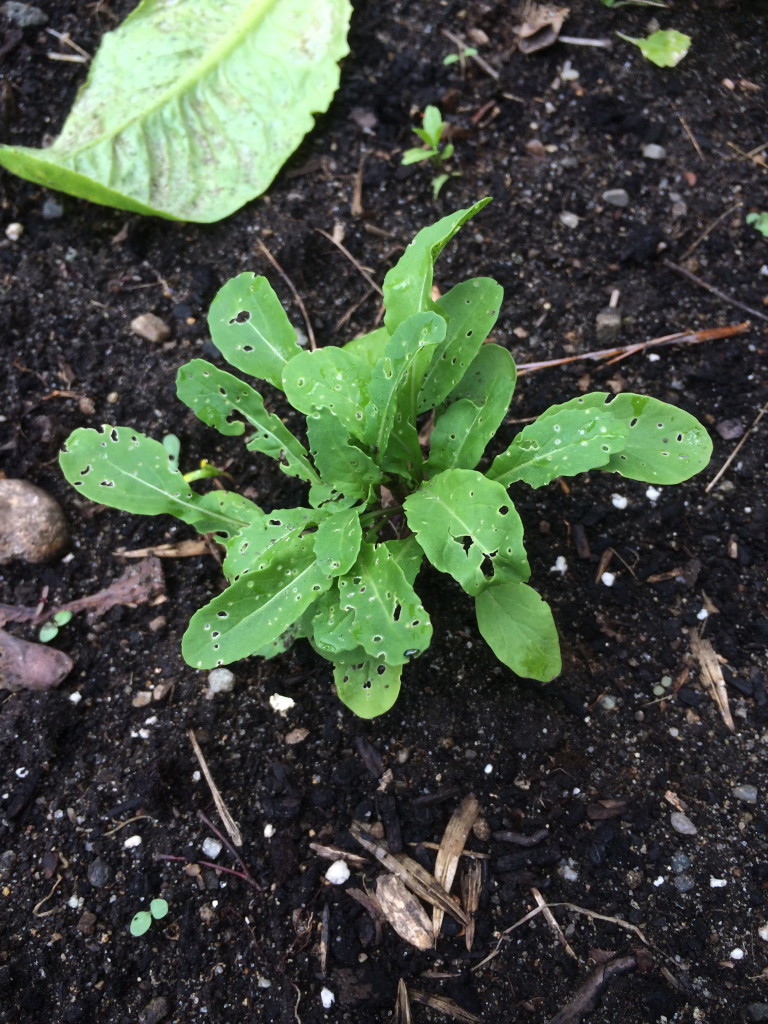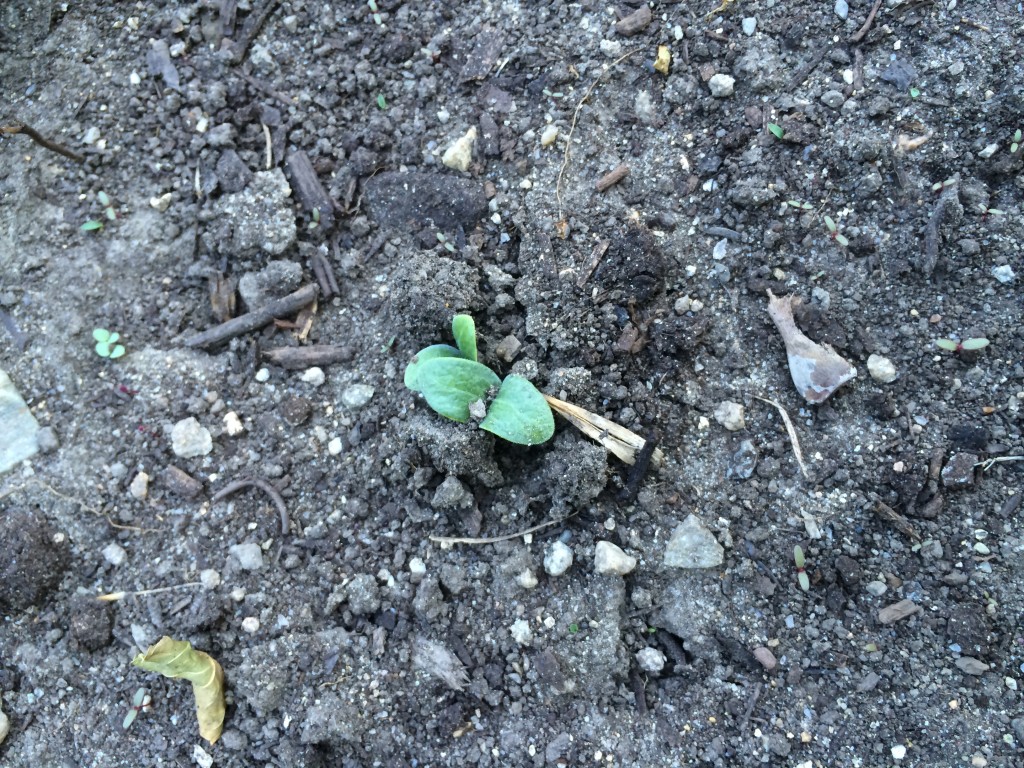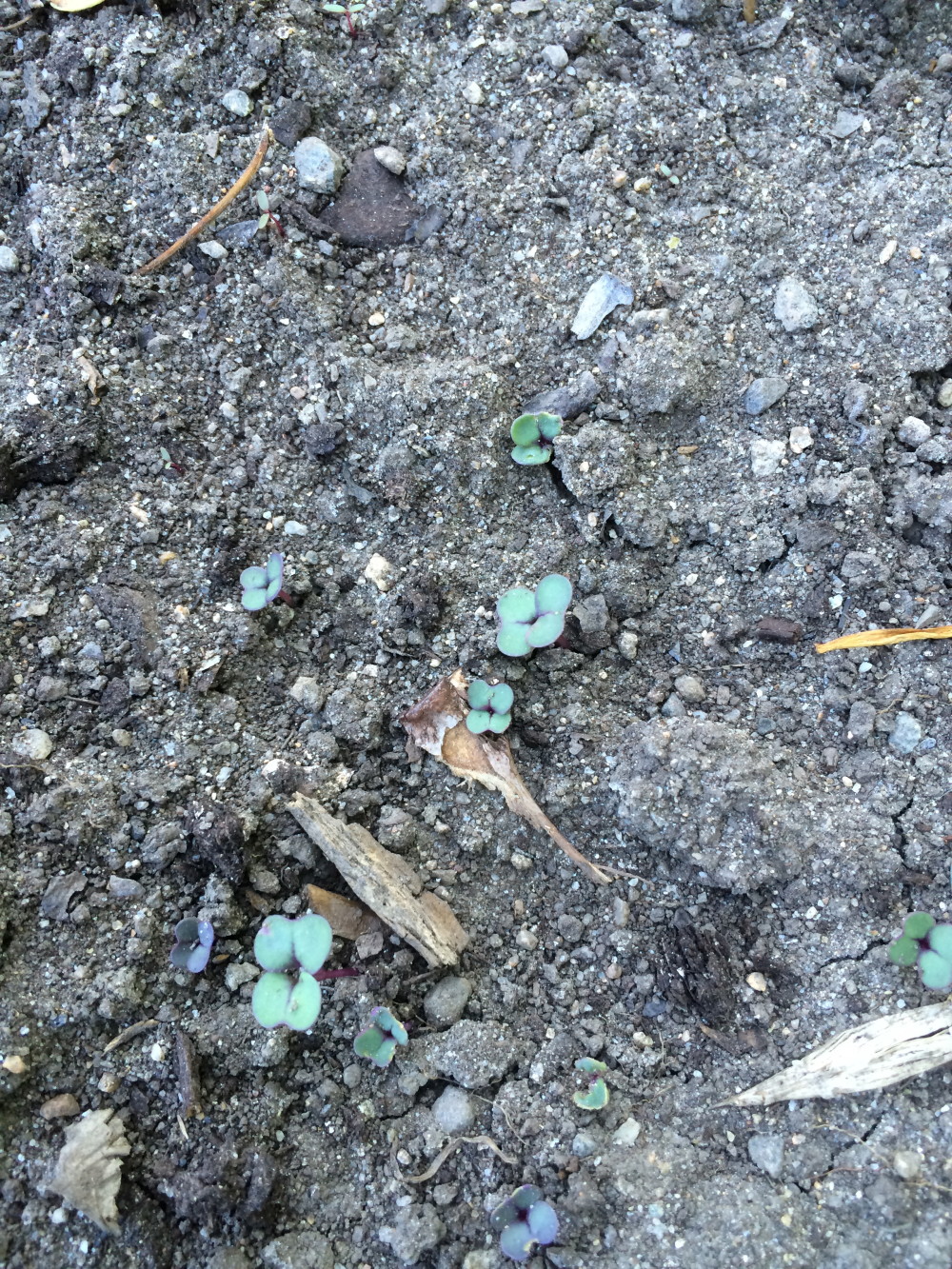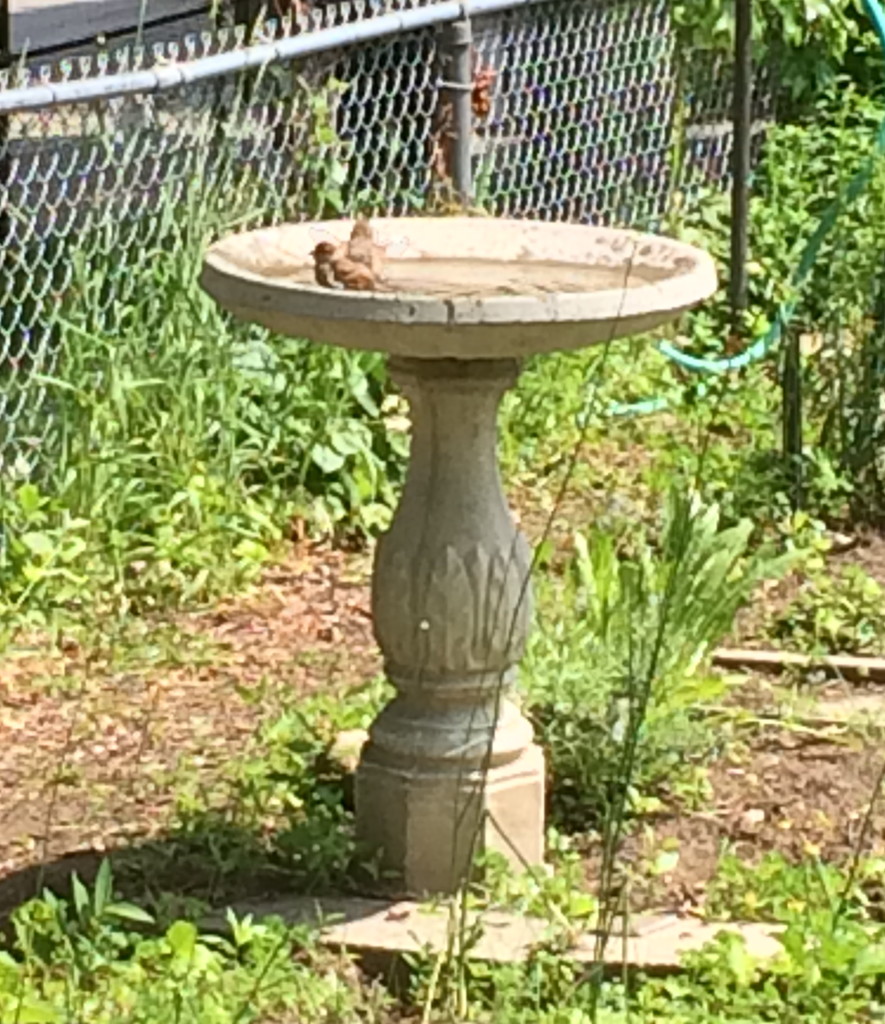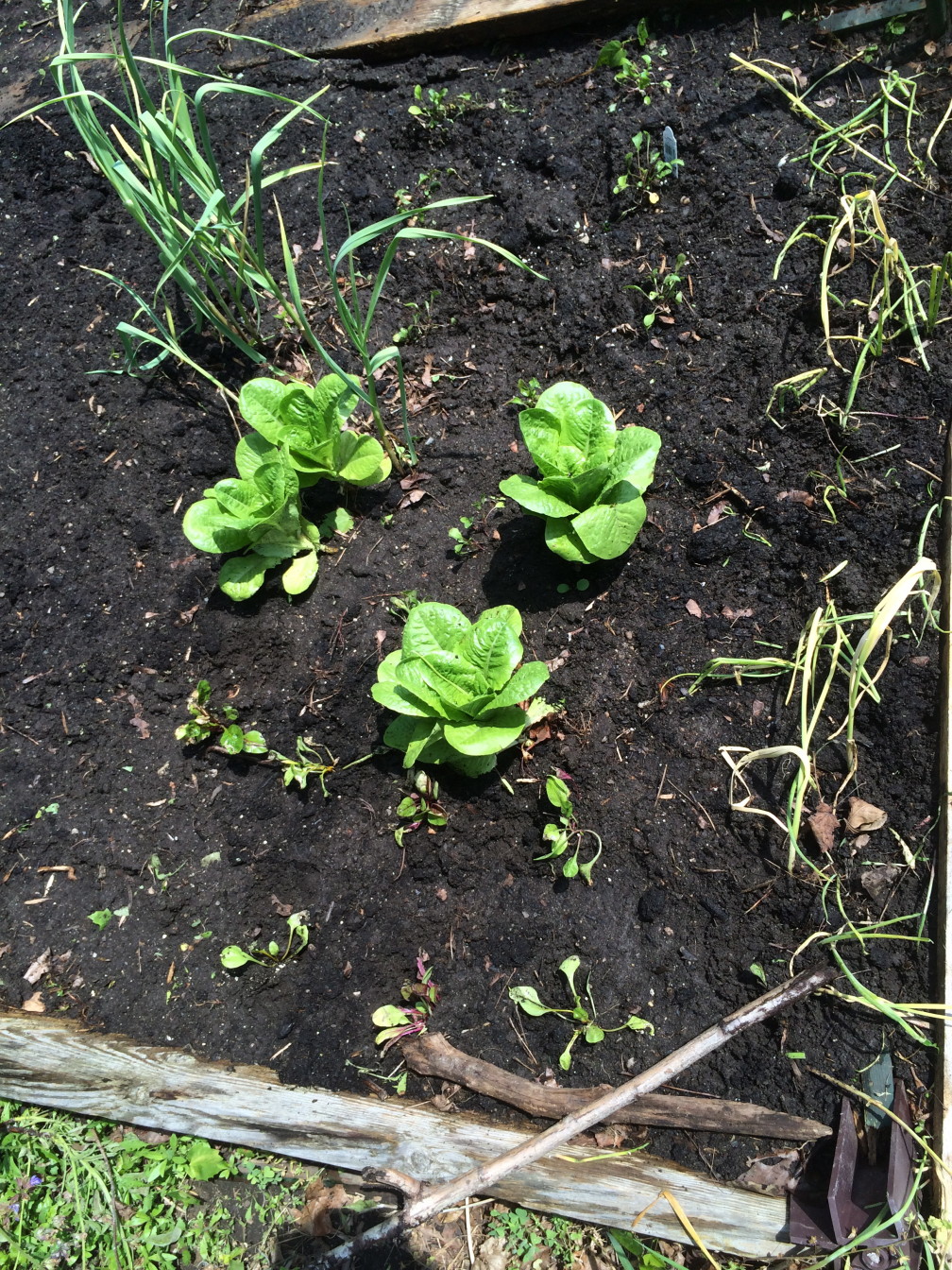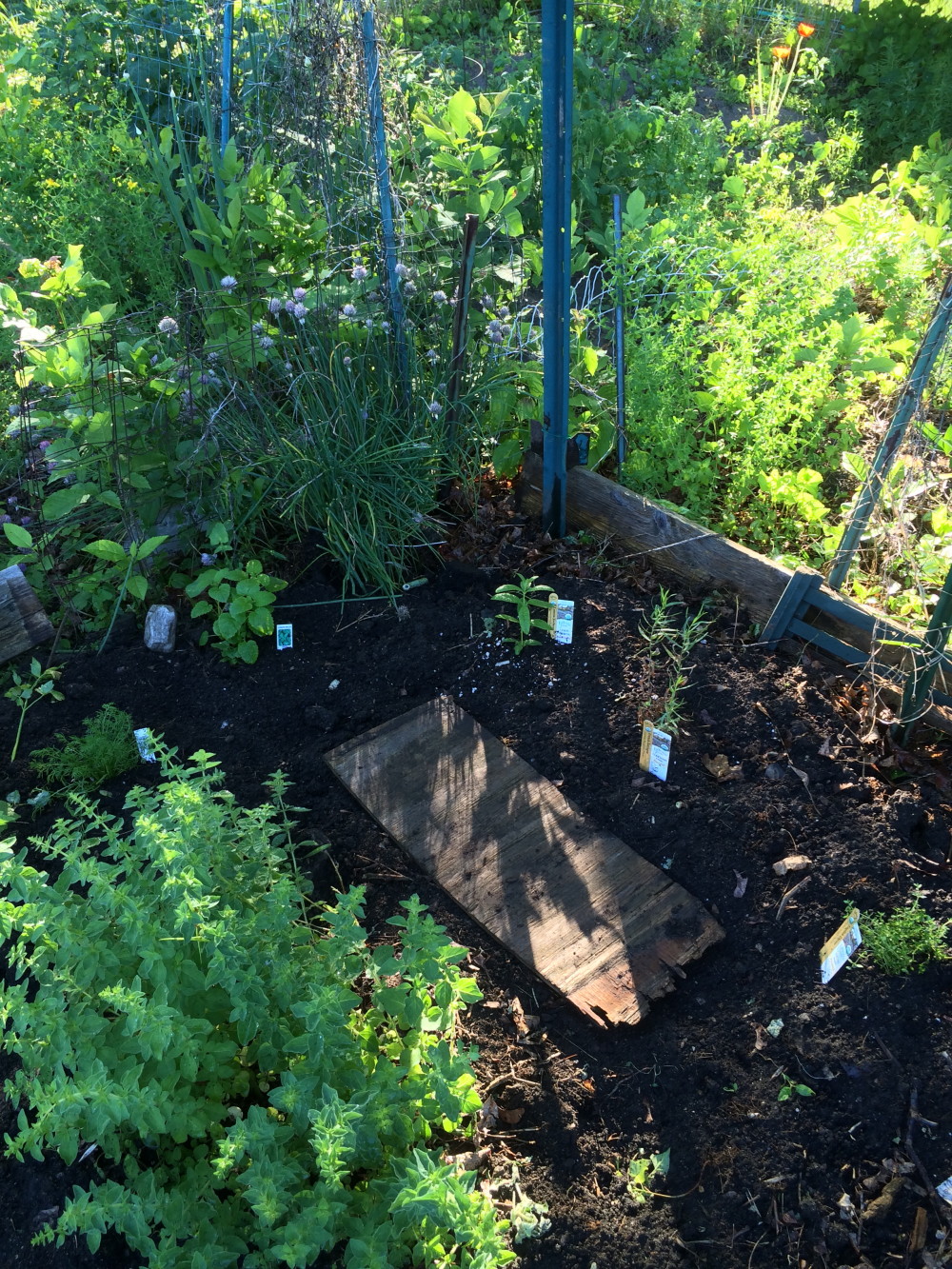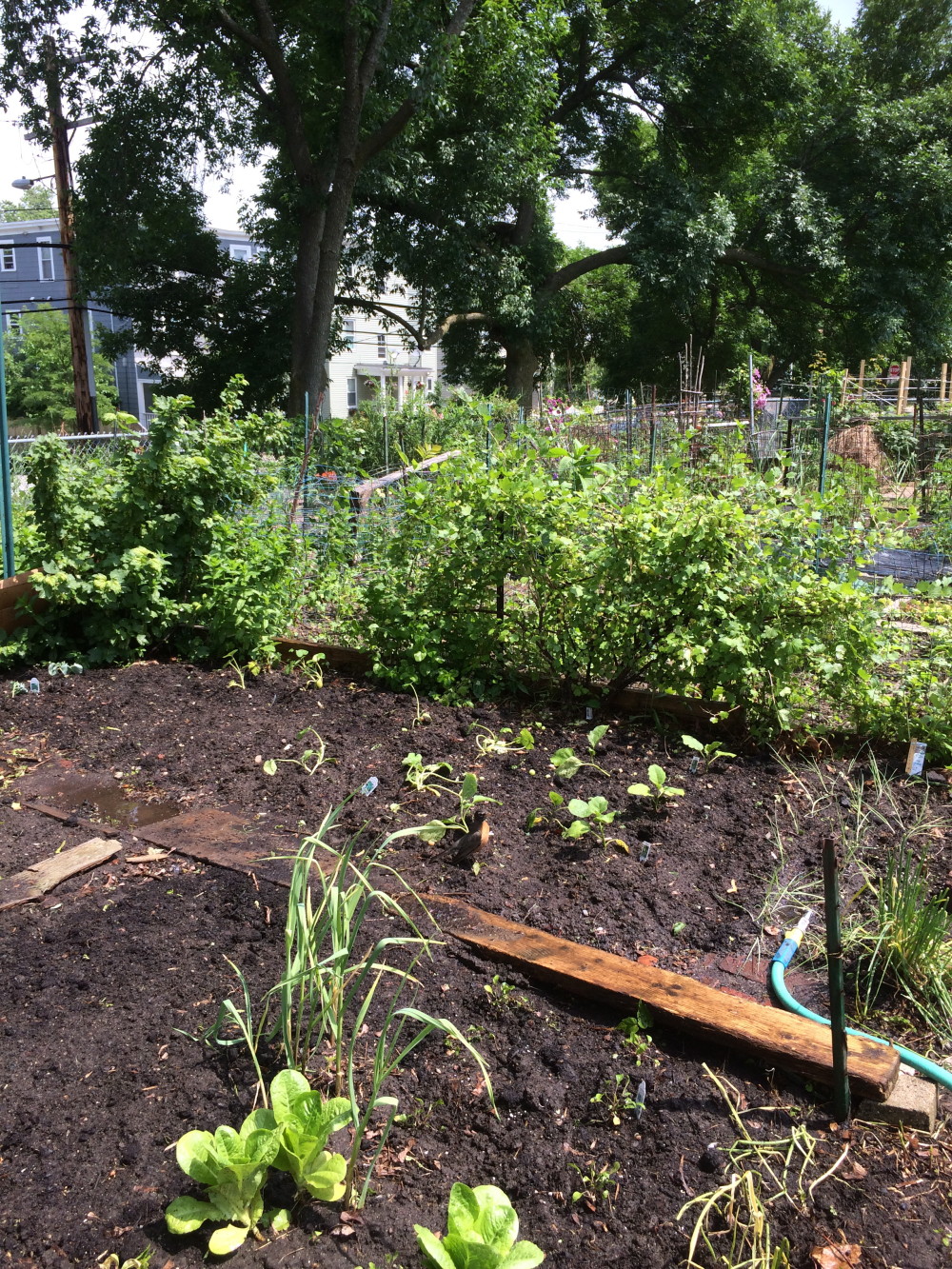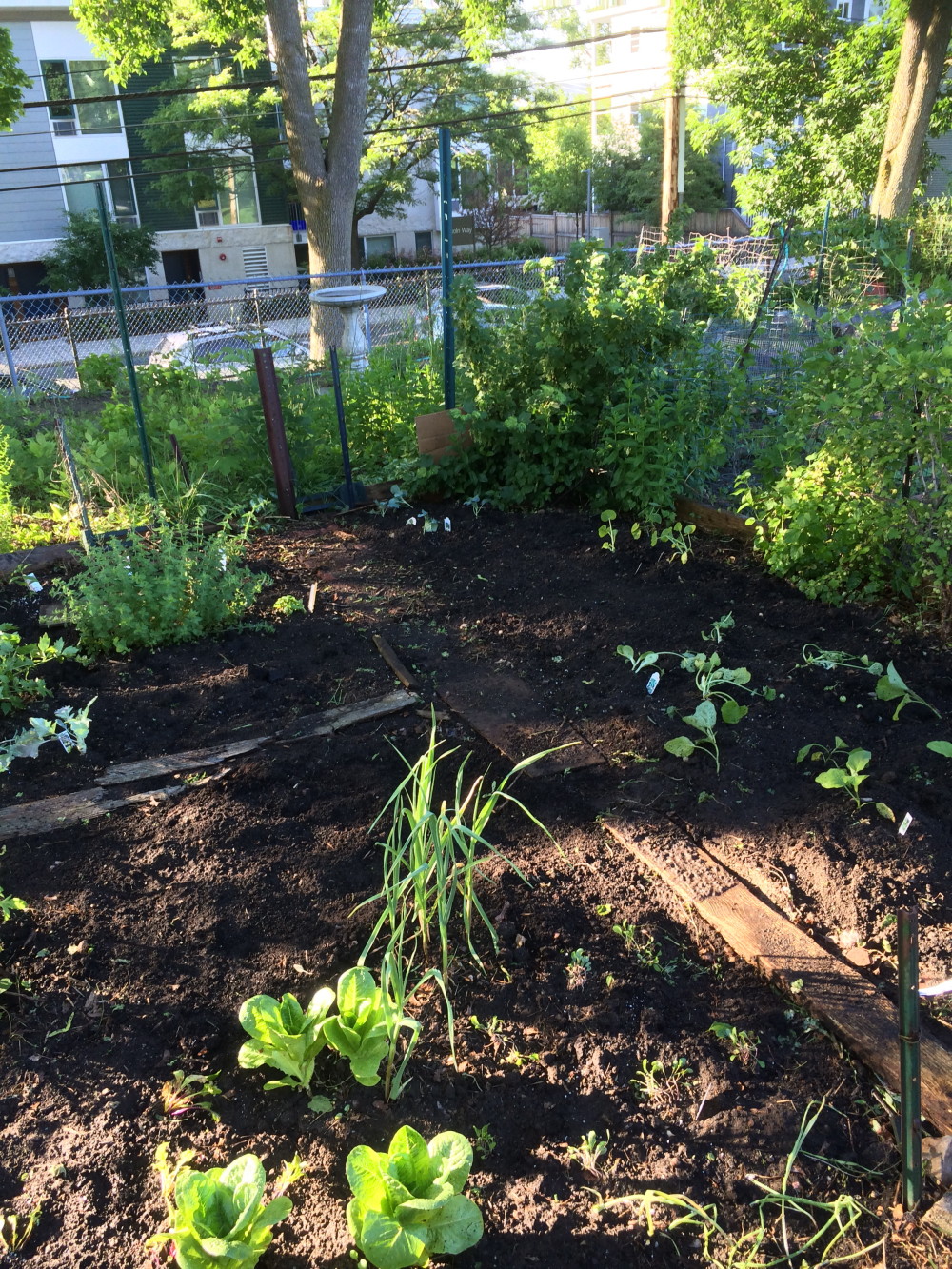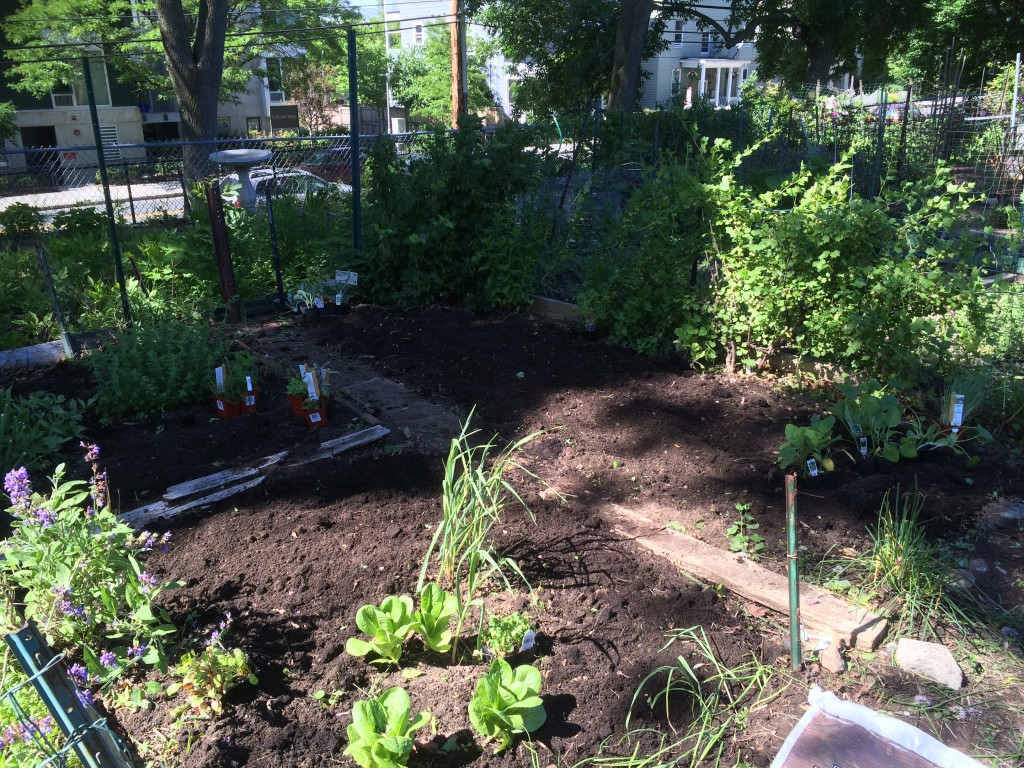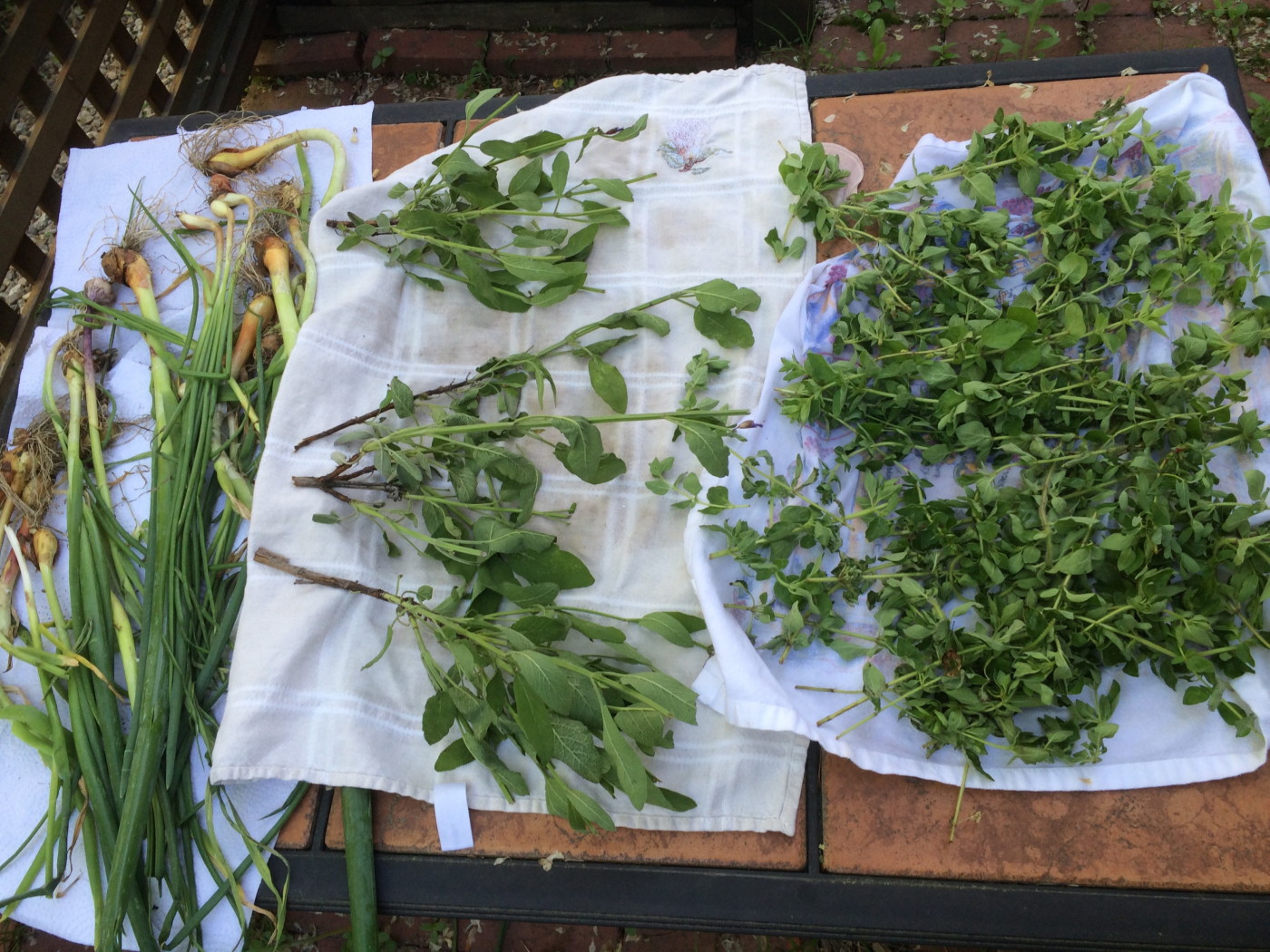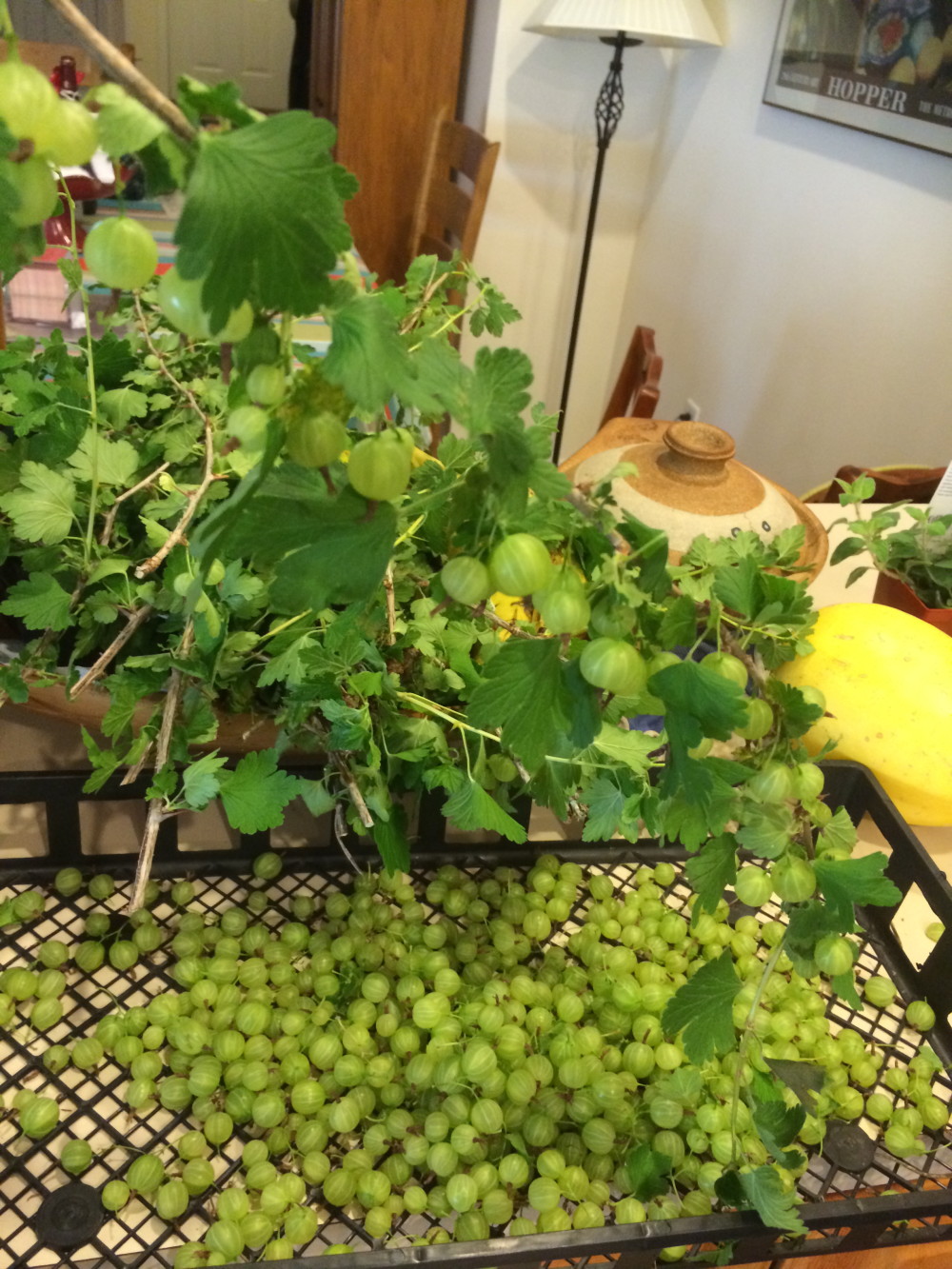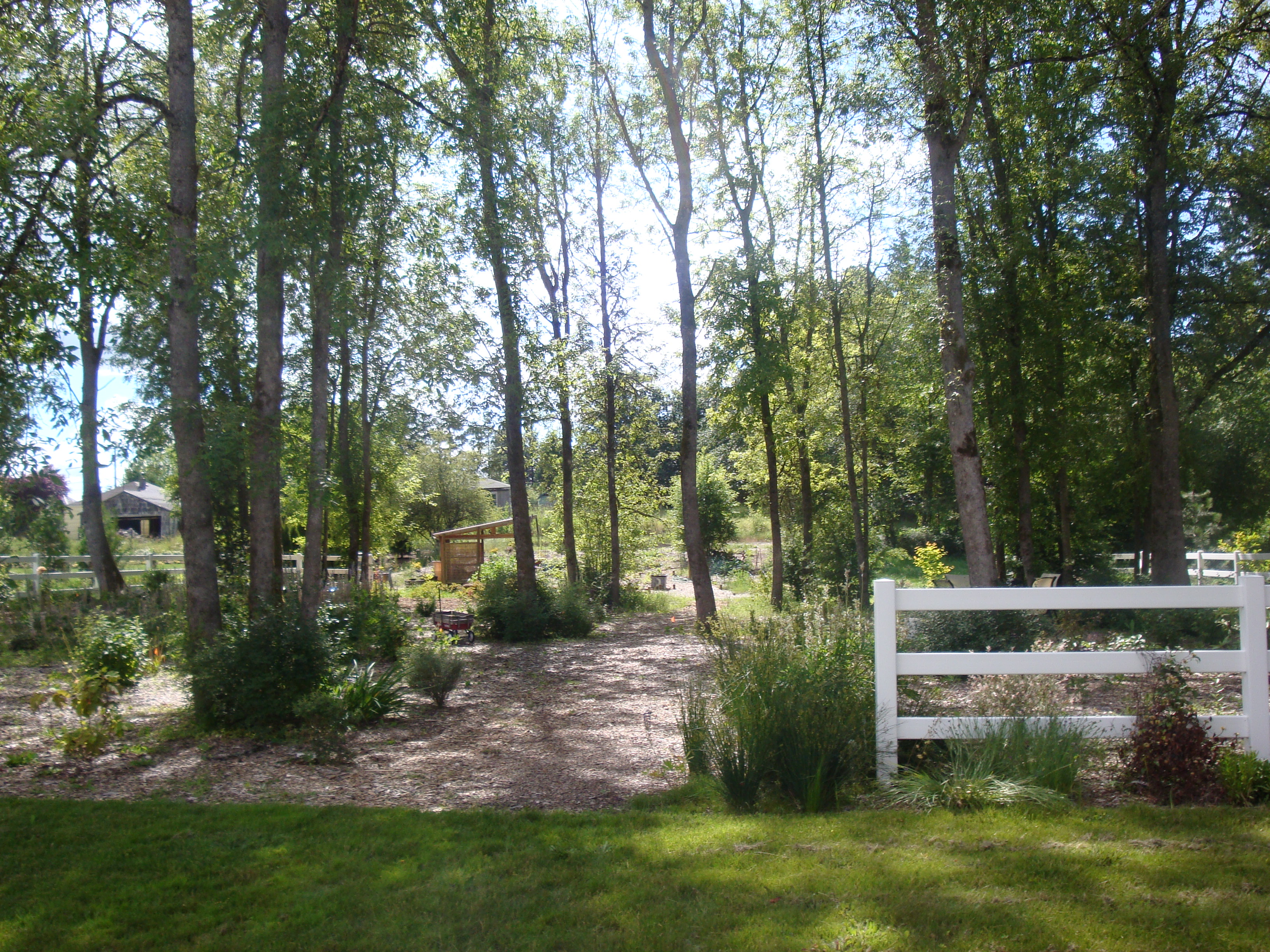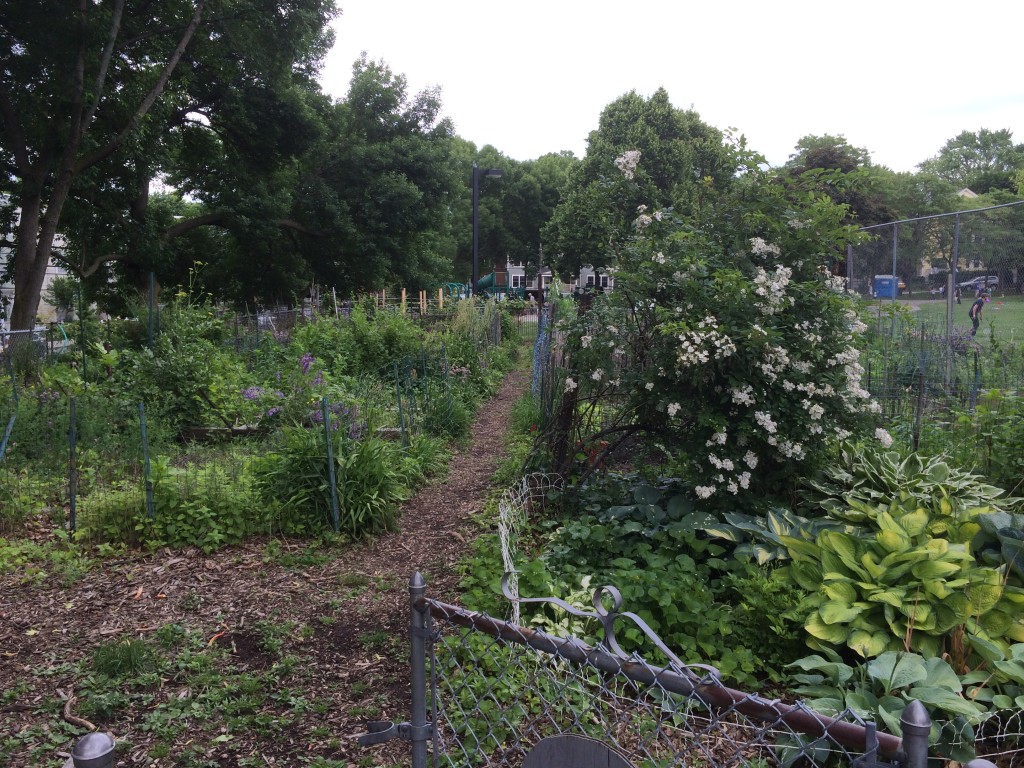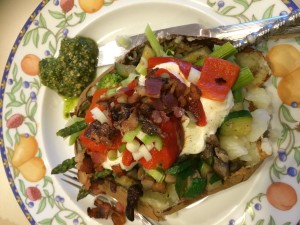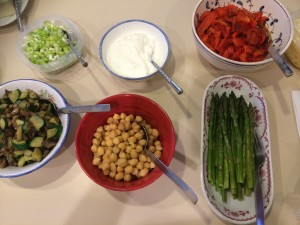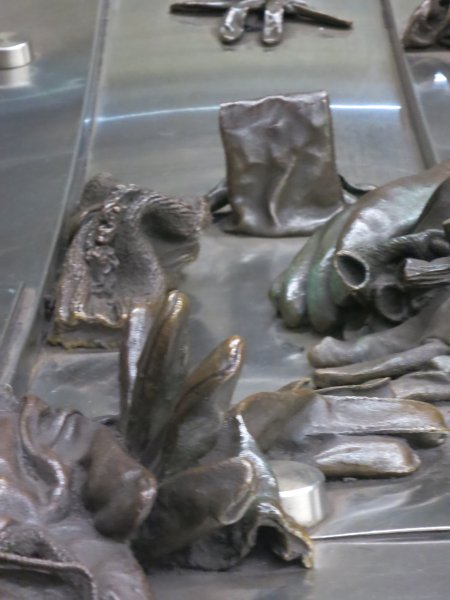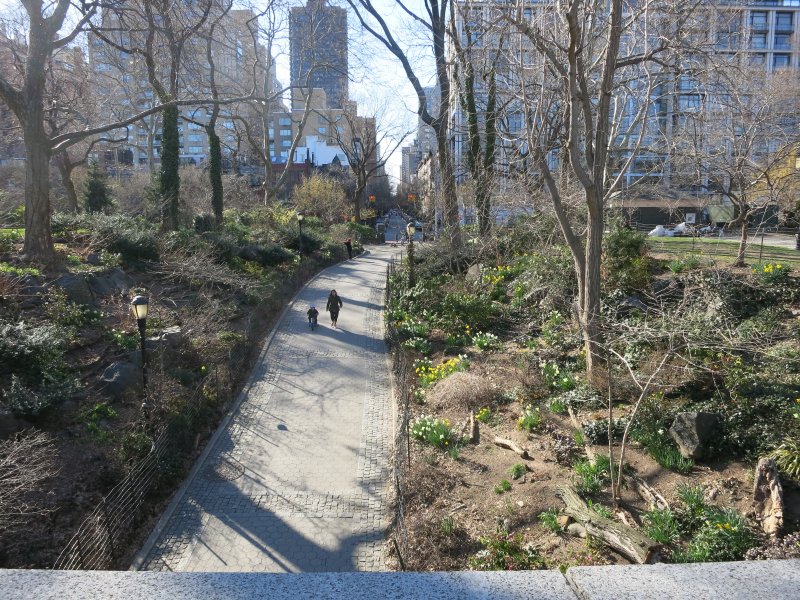Soufflés seem to have gone out of fashion. Why is that? I think maybe they seem intimidating, and yes, they do have a lot of steps that might seem complicated at first. Then there is that persistent possibility that they may not rise, or that they will rise and then fall before getting to the table. Well, okay. I see why they may have fallen out of favor. However, when I harvested my first big armful of rainbow swiss chard leaves from my garden, I wanted to do something special with them, and I knew it had to be a soufflé.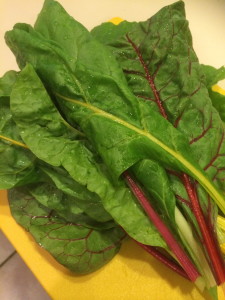
It has been a long time since I made one (see factors above) and since I had failed soufflé-dish-buttering in cooking school – yes, you read that right- I was a little nervous. I decided to return to the source: I studied Julia Child’s Mastering the Art of French Cooking recipe for Spinach Soufflé and then adapted it to make the dish I had in mind. As I worked my way through the many steps I kept thinking, “This can’t possibly be worth it. I won’t do this again.” After the dish was in the oven, however, and the many pans and bowls were washed, the house started to smell truly delicious.  My stomach began to growl. When I pulled it out of the oven, the soufflé had risen 2-3 inches above the dish, bacon and cheese crispy on the top: a thing of beauty. I was so excited. From the first flavorful bite that evening to the cold leftovers for lunch the next day, all I can tell you is this:
My stomach began to growl. When I pulled it out of the oven, the soufflé had risen 2-3 inches above the dish, bacon and cheese crispy on the top: a thing of beauty. I was so excited. From the first flavorful bite that evening to the cold leftovers for lunch the next day, all I can tell you is this:
It IS worth it. I will make it again and you need to try this. You will love it. It is THAT good.
There are a few steps you can prepare in advance, which is what I will do next time, and that will make it a lot easier.
I served this soufflé with a simple tomato and cucumber salad and crispy French bread. It makes a perfect light dinner.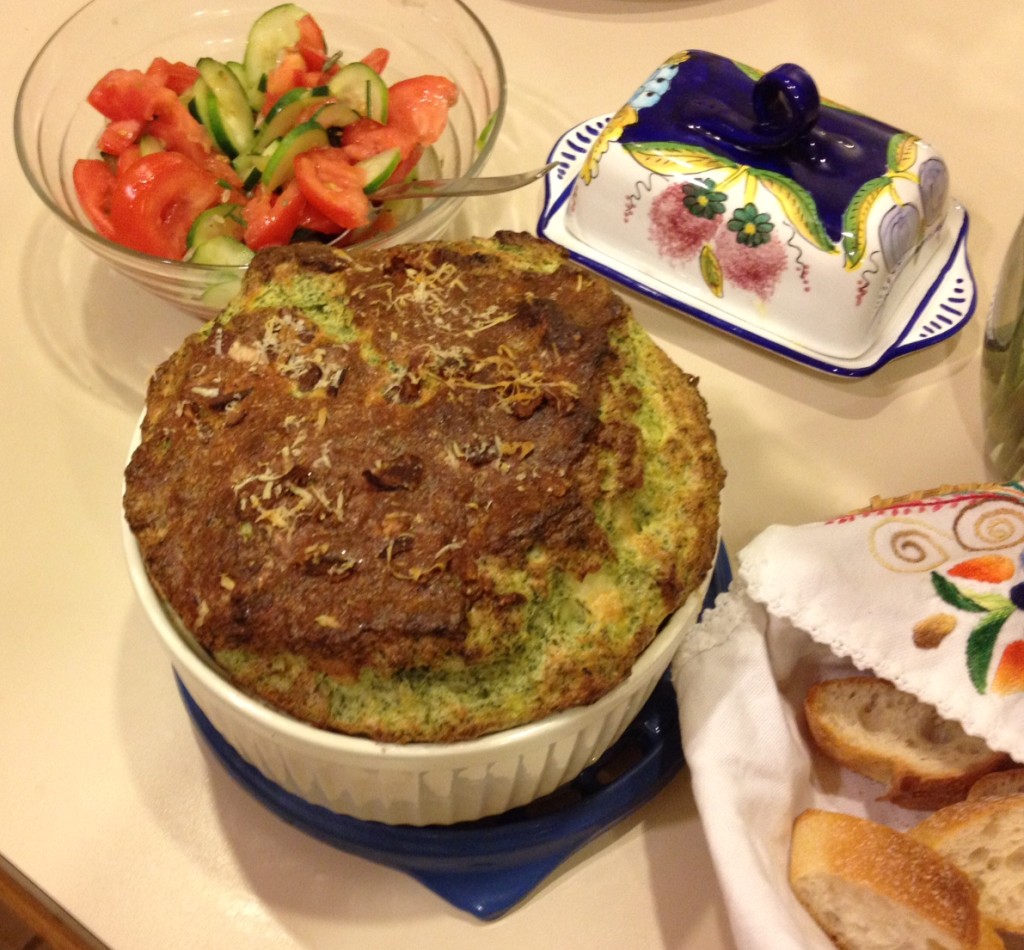
Swiss Chard and Bacon Soufflé (serves 4 or 2 with leftovers to eat cold the next day)
Ingredients:
Dish:
You will need a six cup soufflé dish
1 tsp butter
2 TBSP grated parmesan cheese
Greens:
2 slices bacon
1 lb swiss chard, cleaned & finely chopped – should be about 8 cups (or enough frozen spinach, thawed and drained, to make 1 cup)
¼ tsp salt
2 small or 1 large garlic clove, finely minced
Sauce base:
3 TBSP butter
1 TBSP chopped shallot or green onion
3 TBSP flour (gluten free option: 2 TBSP almond flour and 1 TBSP tapioca flour)
1 cup milk
½ tsp salt
grinding of pepper
¼ tsp nutmeg
½ cup grated parmesan cheese
5 eggs
pinch of salt
¼ tsp cream of tartar
To start:
Butter the bottom and all the way up the sides of the soufflé dish as evenly as possible with 1 tsp butter. Distribute the parmesan as evenly as possible on all surfaces by shaking the dish, tipping it on its side and rotating it. Turn upside down over the sink and tap lightly to remove excess. To avoid my humiliating cooking school mistake of accidentally leaving a thumbprint inside the buttered dish, don’t be tempted to touch up the coverage with your finger.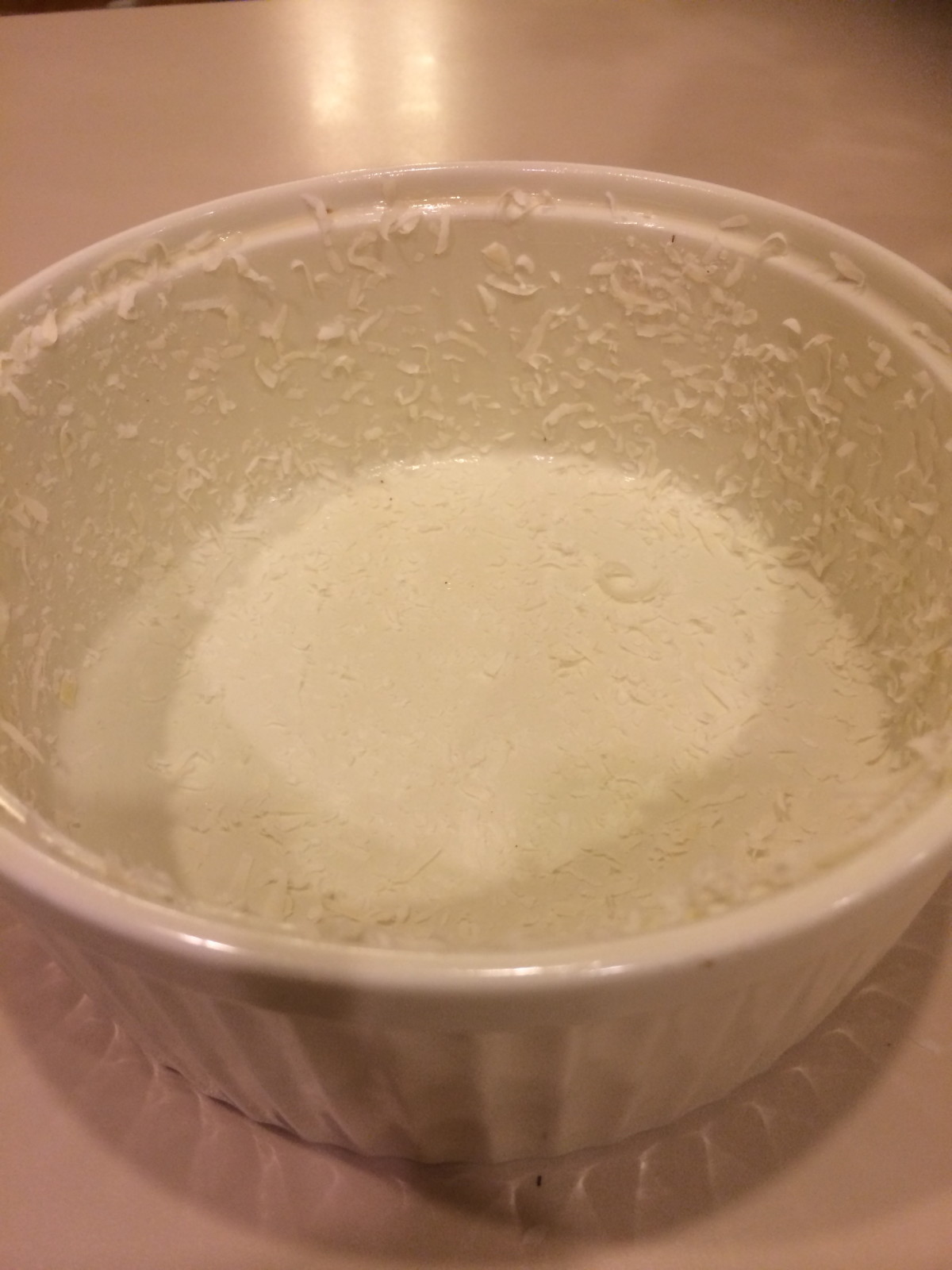
The greens: (you can do this earlier in the day, or a day or two before. Warm up slightly as you continue)
Chop up the bacon in very small pieces and fry in a large frying pan until very crisp. Remove with a slotted spoon and drain on paper towels. Leave a couple of TBSP of bacon grease in the pan. Set aside.
In another pan with a lid, cook the greens down with about ½ cup water on medium heat, until very soft (about 10 minutes, but watch that they don’t burn. Add more water if not soft). You should end up with about a cup. You can use frozen spinach if you prefer, thawed and drained, ending up with 1 cup. Press as much water out of the greens as possible.
Sautée the finely chopped garlic and the greens in the bacon grease with ¼ tsp salt until warmed through and thoroughly mixed. I puréed them with an immersion blender at this stage, but if they are finely chopped and mashed up, that can work too.
The sauce base: (this can also be done earlier and set aside with some pats of butter on top. Warm slightly when you start preparing the rest)
Melt 3 TBSP butter in saucepan and add in 1 TBSP chopped shallot or green onion. After a minute mix in flour (or almond flour and tapioca), stirring into a paste, and cooking over medium heat 2-3 minutes without browning. Remove from heat. Bring 1 cup milk to a boil in a small pan or in the microwave and pour into butter mixture, whisking quickly until blended. Whisk in salt, pepper and nutmeg. Return to heat and boil, whisking 1 minute. Sauce will be thick. Remove from heat.
Immediately begin to separate 4 eggs, putting whites into a large mixing bowl to beat later. Put yolks into sauce, whisking after each one.
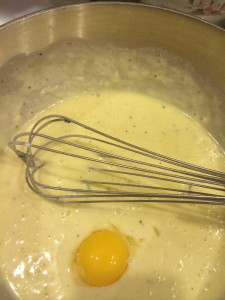
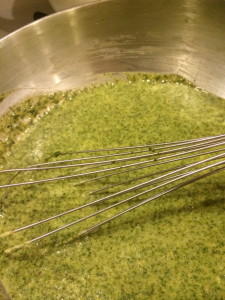 Stir in the greens. Combine thoroughly.
Stir in the greens. Combine thoroughly.
Egg whites: (this must be done right before you want to put the soufflé in the oven, about 40-45 minutes from dinner time!)
Add one more egg white to the mixing bowl (total of 5 egg whites) and save the last yolk to add to an omelet or scrambled eggs another day. Beat egg whites with a mixer, starting on a slow speed until they are frothy, then gradually increasing the speed. After about 1 minute when they are foaming, add a pinch of salt and ¼ tsp cream of tartar. Beat another minute or two. When whites start to stiffen up and turn shiny, test to see if they hold a peak when beaters are lifted up. If they droop, beat a bit more until they stand up in peaks. They should look shiny and smooth. Do not overbeat! (If you do, and they get granular and dull, beat in another egg white…)
Put it all together:
With a rubber spatula, stir ¼ of the beaten egg whites into the pan with the lovely green sauce base, along with ½ the crispy bacon and all but 1 TBSP of the grated parmesan cheese.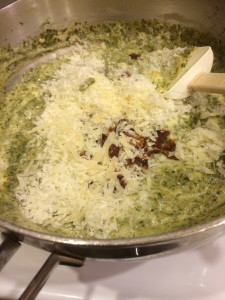
Now put the rest of the beaten egg whites into the pan and gently but quickly fold them into the green mixture with the rubber spatula, cutting down through the whites and scooping some of the sauce up from the bottom onto the whites on top. Repeat until most of the whites have been gently incorporated. It should take about a minute, and don’t worry if there are some areas where the whites are not quite mixed in.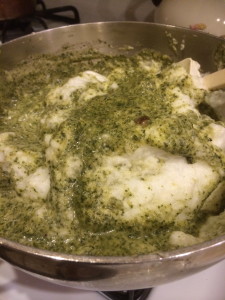
Pour the fluffy mixture lightly into prepared soufflé dish and sprinkle top with remaining cheese and bacon.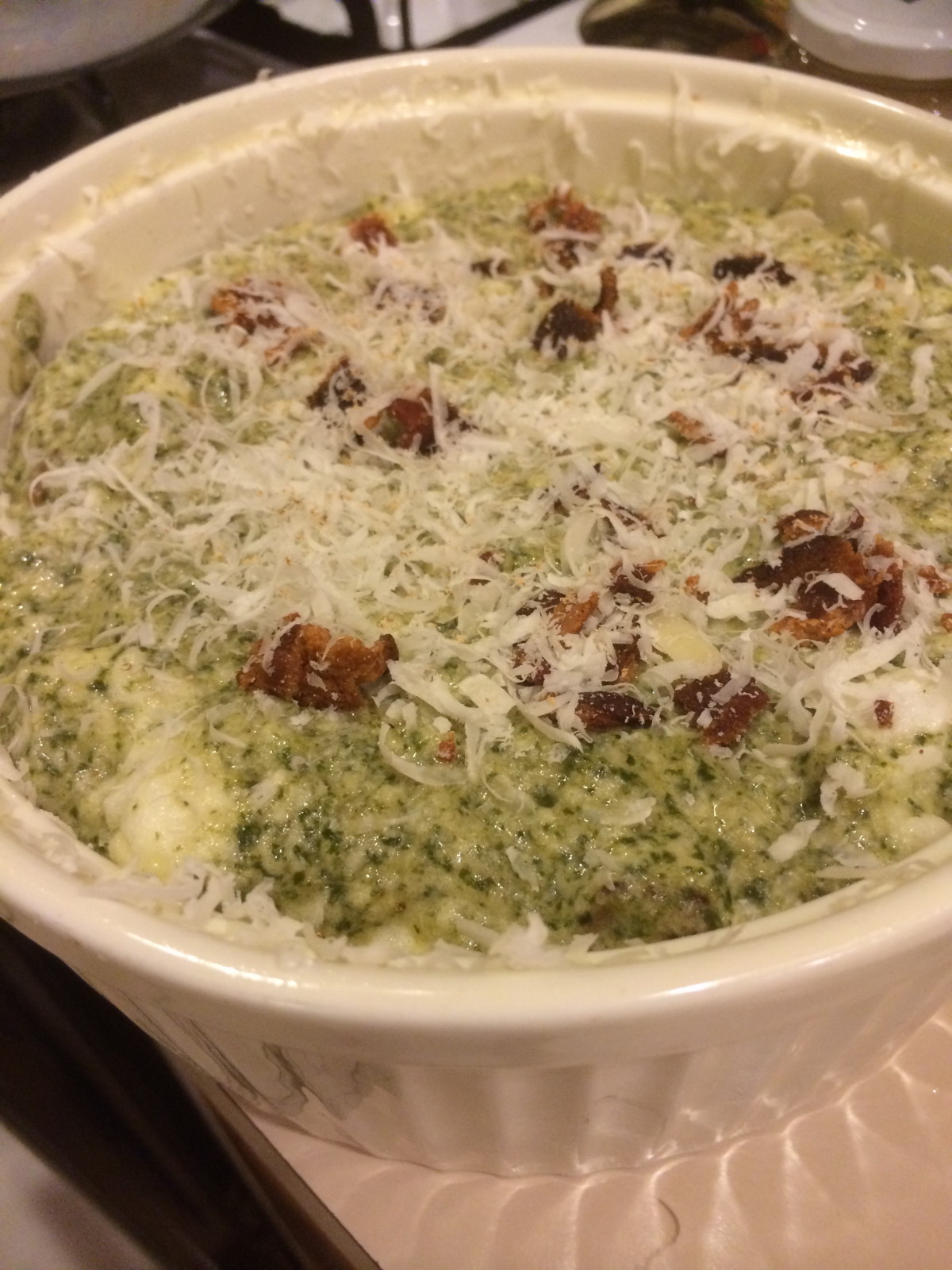
Place dish on rack in middle of preheated 400 degree oven and immediately turn the temperature down to 375 degrees. Do not make any loud noises – like dropping things or slamming cabinets! Bake 25-35 minutes. When it is done, the soufflé will have risen 2-3 inches above the rim of the dish. It will be brown on top and firm to the touch.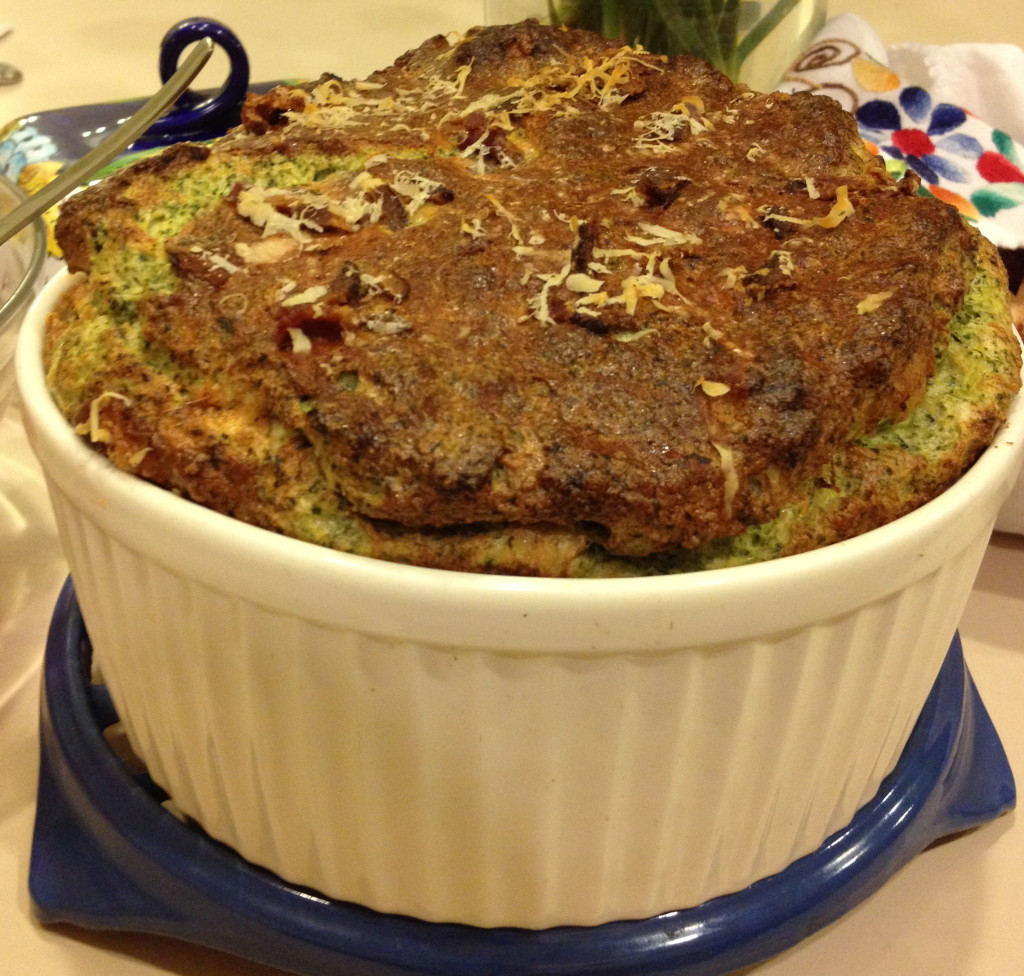
The soufflé will start to sink almost as soon as it comes out of the oven but will still remain a bit higher than the rim of the dish, so take it right to the table. (The accompanying photo was taken about 5 minutes after coming out of the oven.) Oooh and aaaah, and then serve it up. Poke the tip of a sharp knife straight down in the middle and then slice into quarters. Scoop it out like you would a slice of pie. Serve with a light salad with vinaigrette dressing and some French bread.
Pat yourself on the back and be proud: you just made a soufflé!
Like this:
Like Loading...
